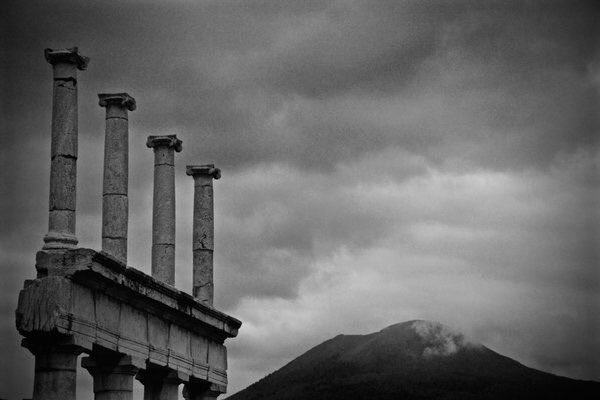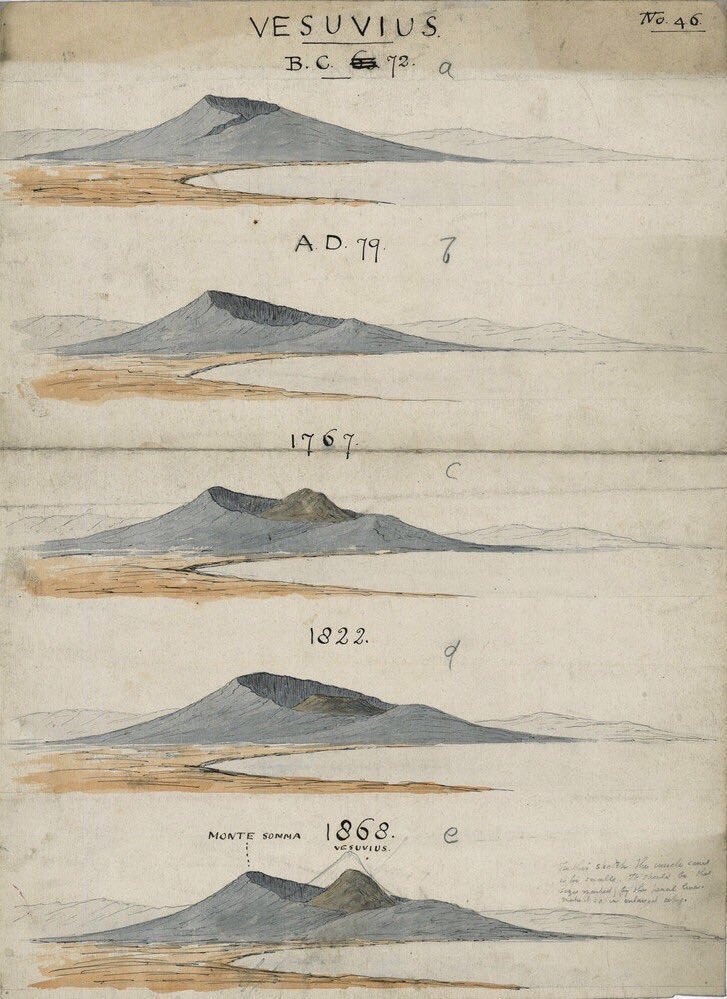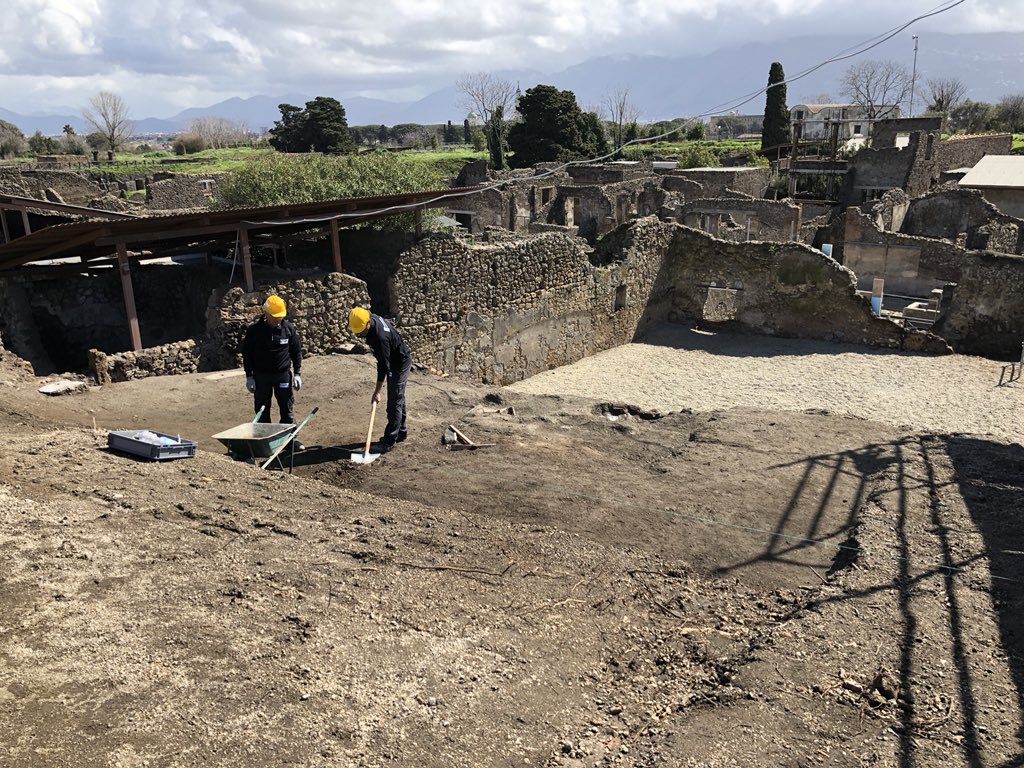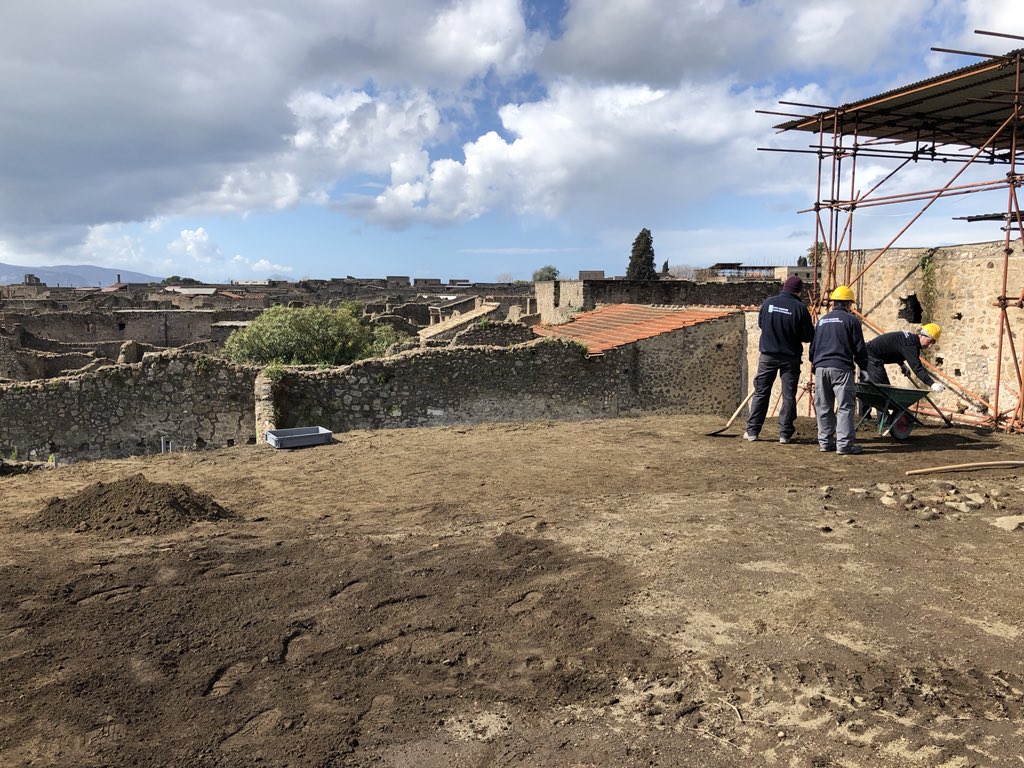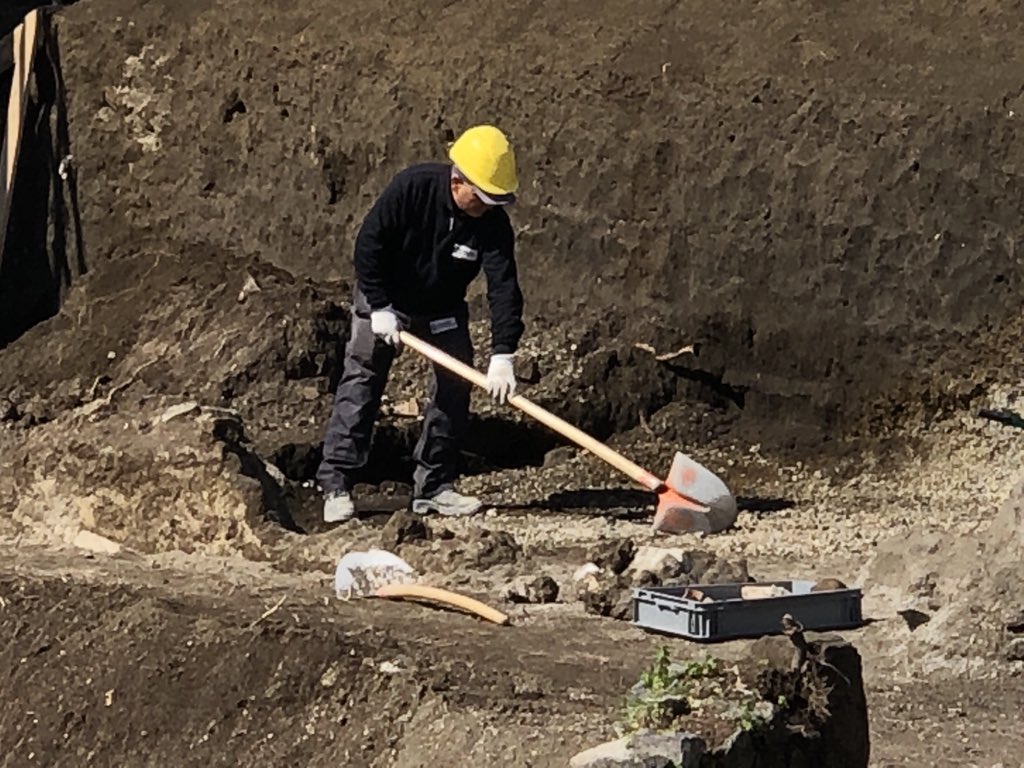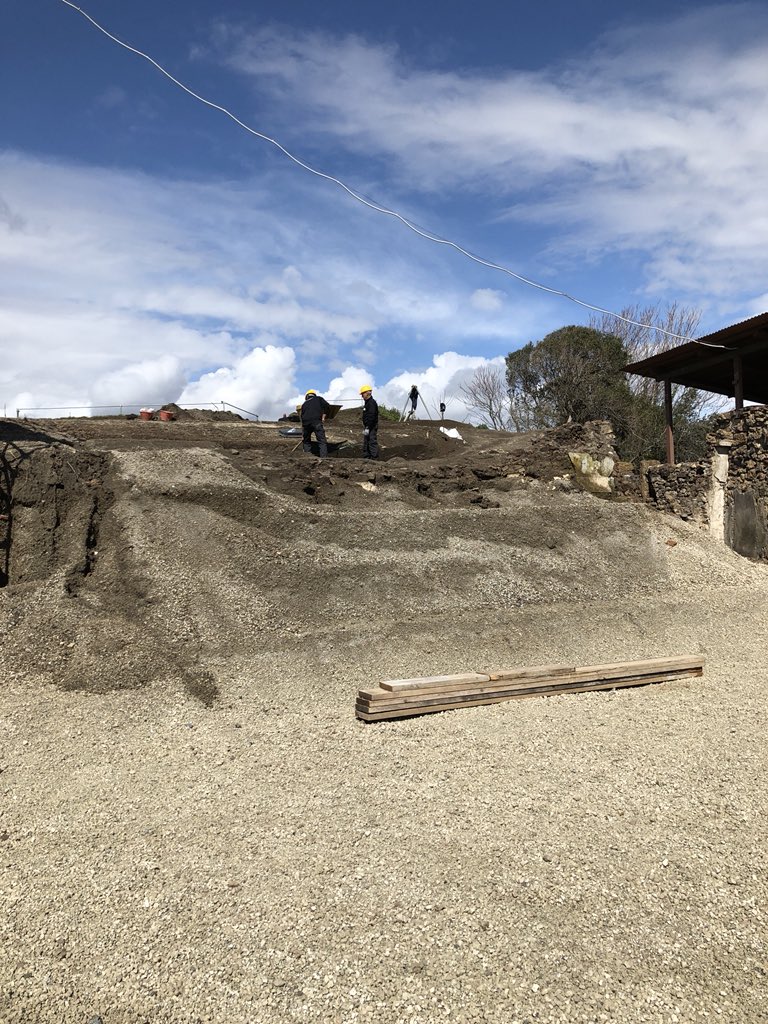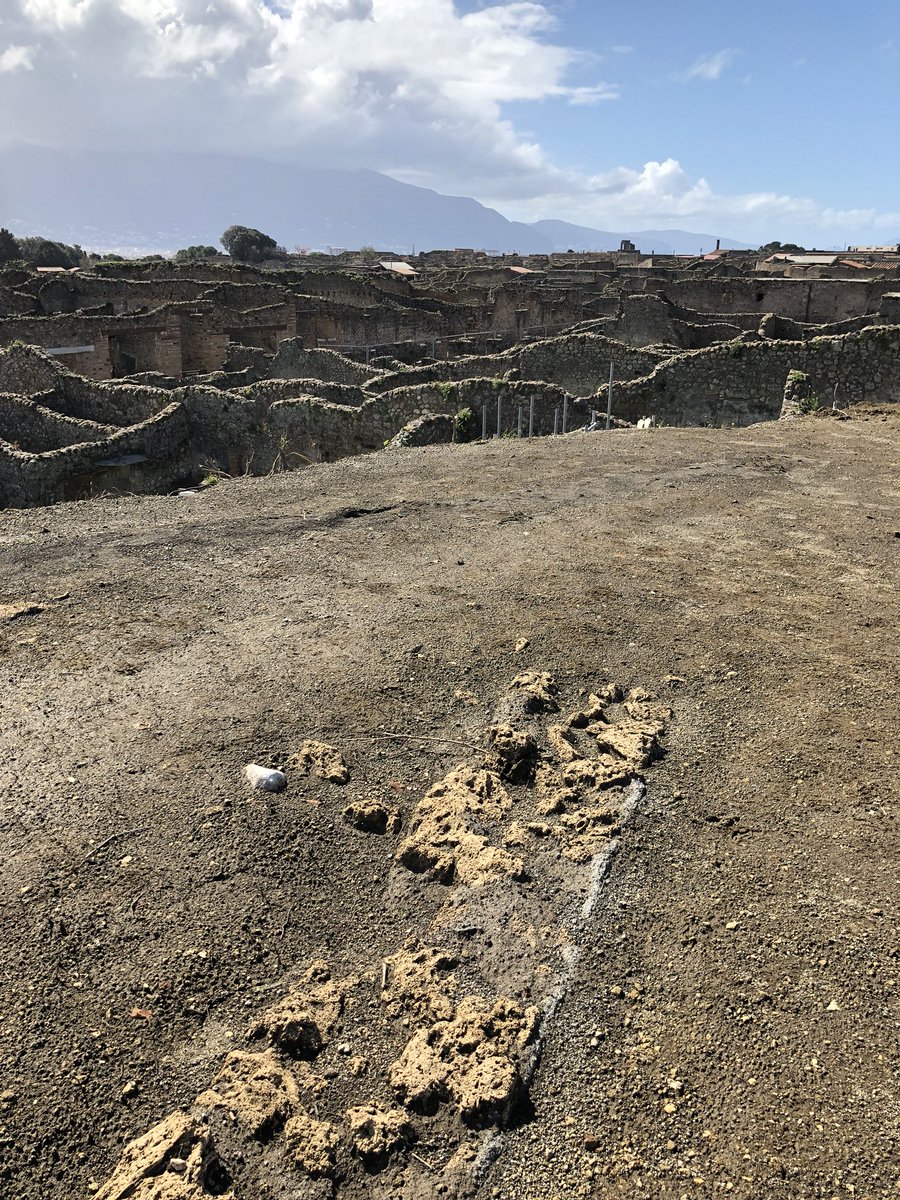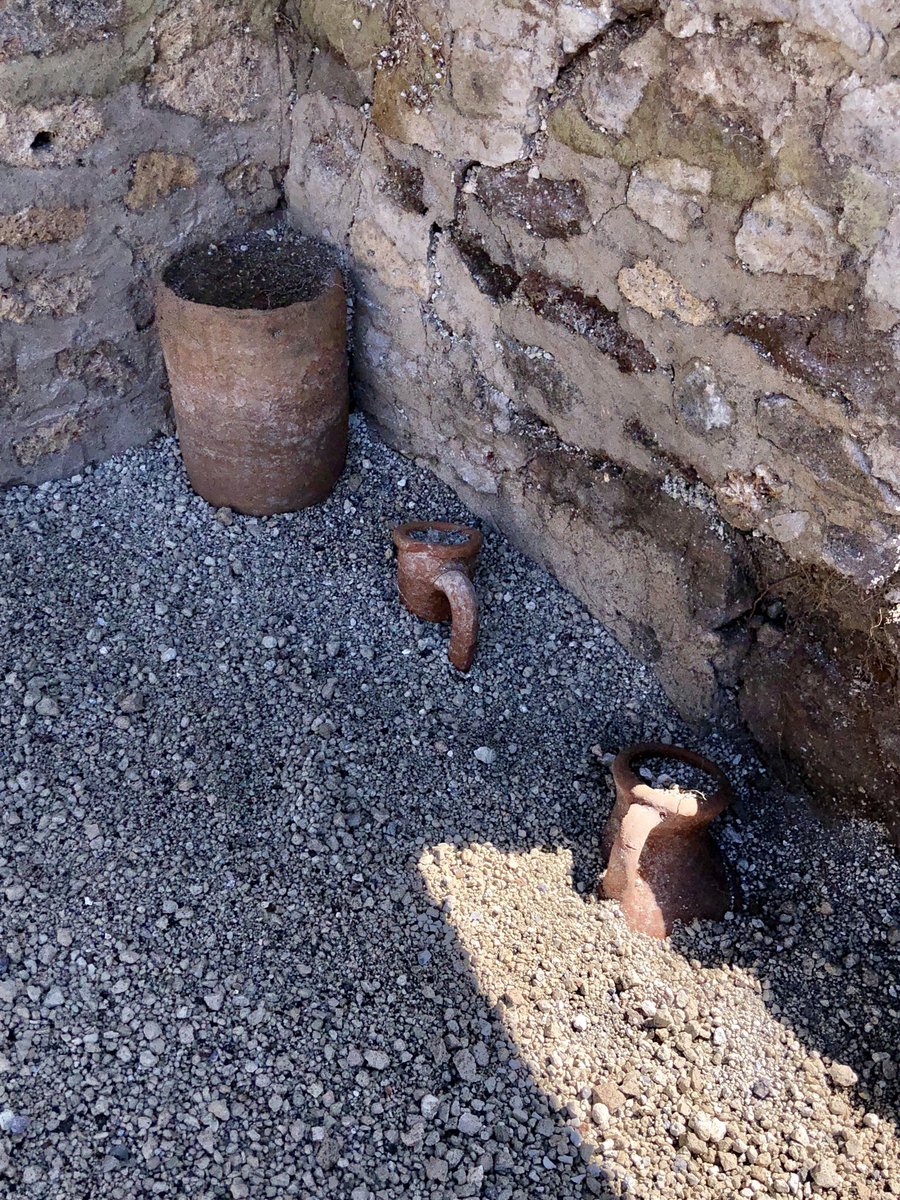I’ve waited 22 years but very recently I finally got to visit the Roman theatre at #Herculaneum which is still buried in the eruption material of AD 79. My excitement was palpable... #HerculaneumTheatre 
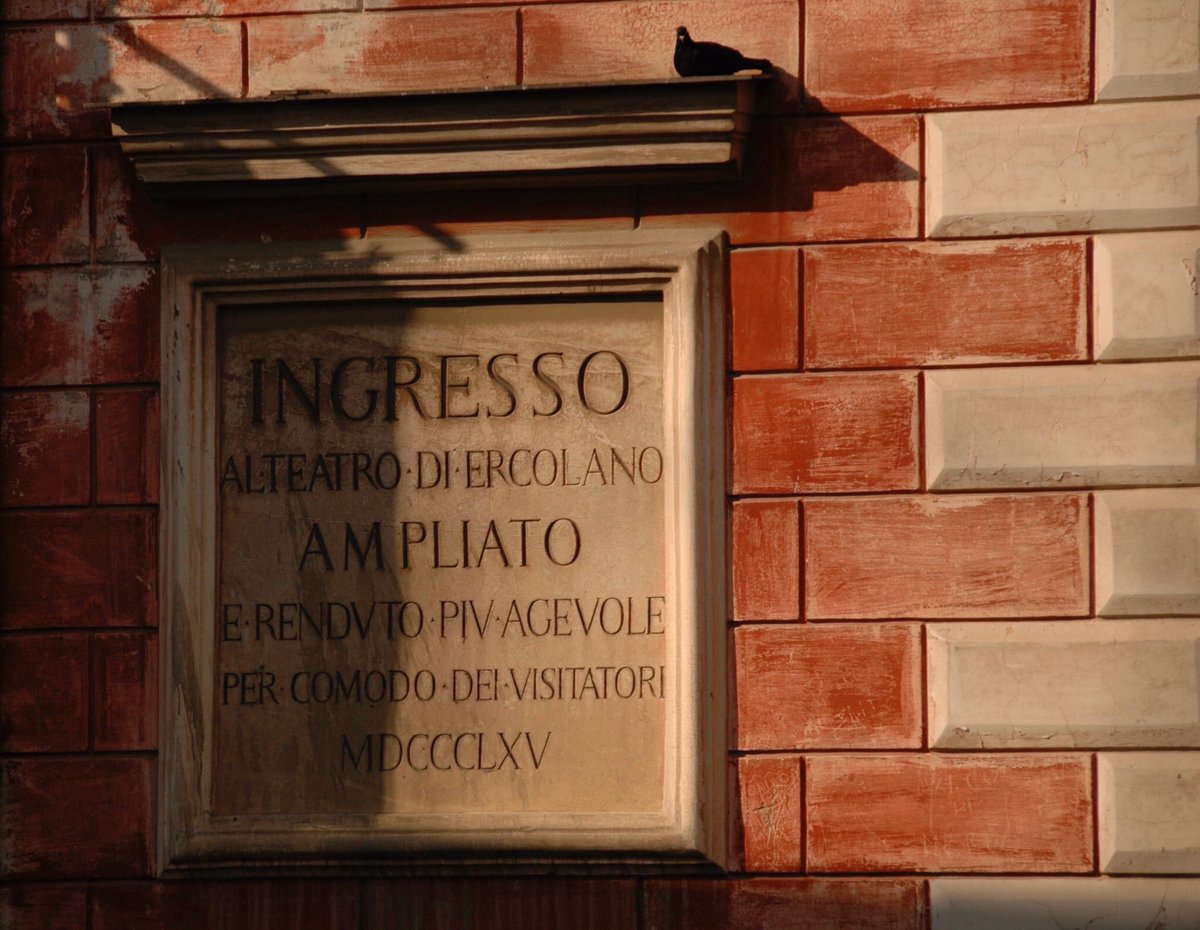
The Roman theatre in Herculaneum is located just north of the excavated part of the ancient town. But for a series of tunnels dug through it in the 18th/19th centuries, it lies hidden from view under the volcanic debris of 79AD. Only small glimpses of the structure are possible. 
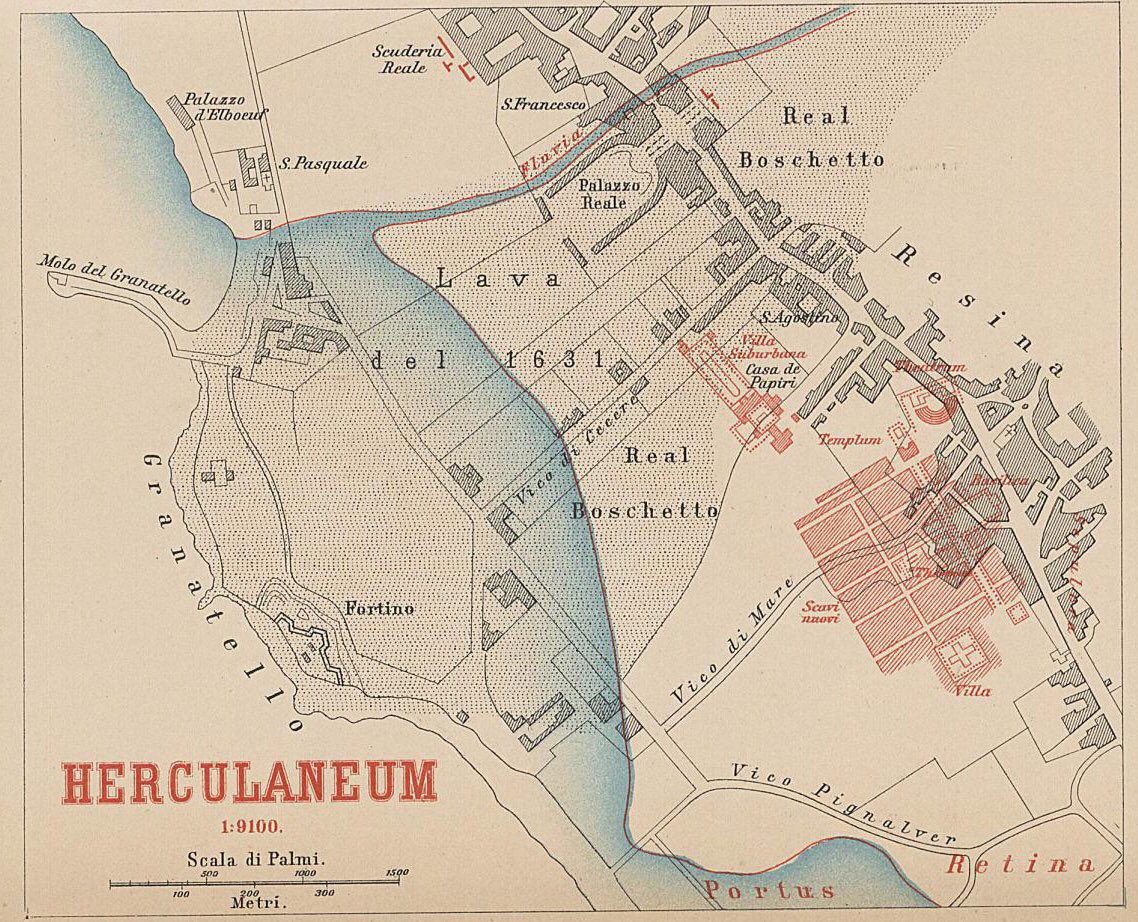
Today, the descent into the theatre is through a building on Via Mare & by way of a steep flight of steps cut into the volcanic material, just as it was at the time of the Grand Tour in the 18th century.
Image 2: 1840 lithograph of some of the visitors to the theatre (anonymous)


Image 2: 1840 lithograph of some of the visitors to the theatre (anonymous)
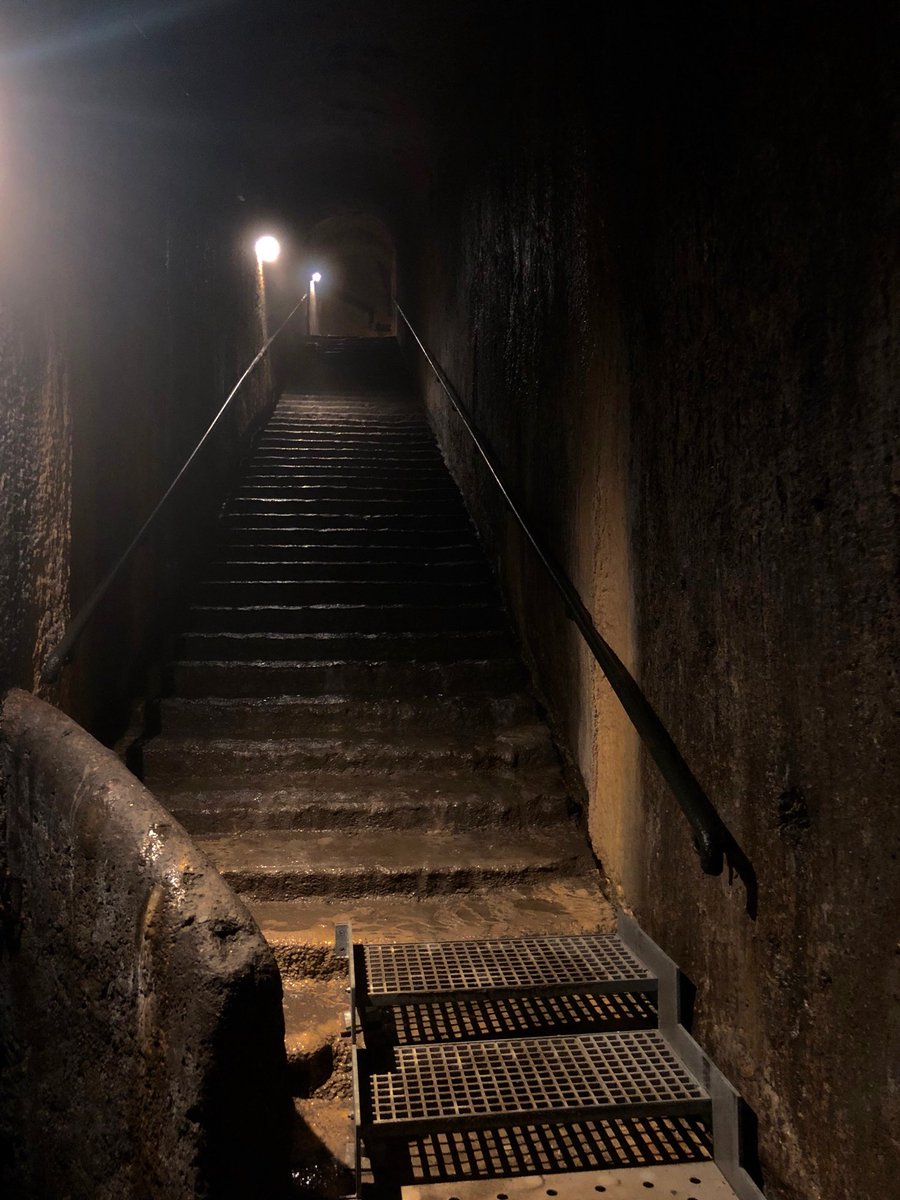
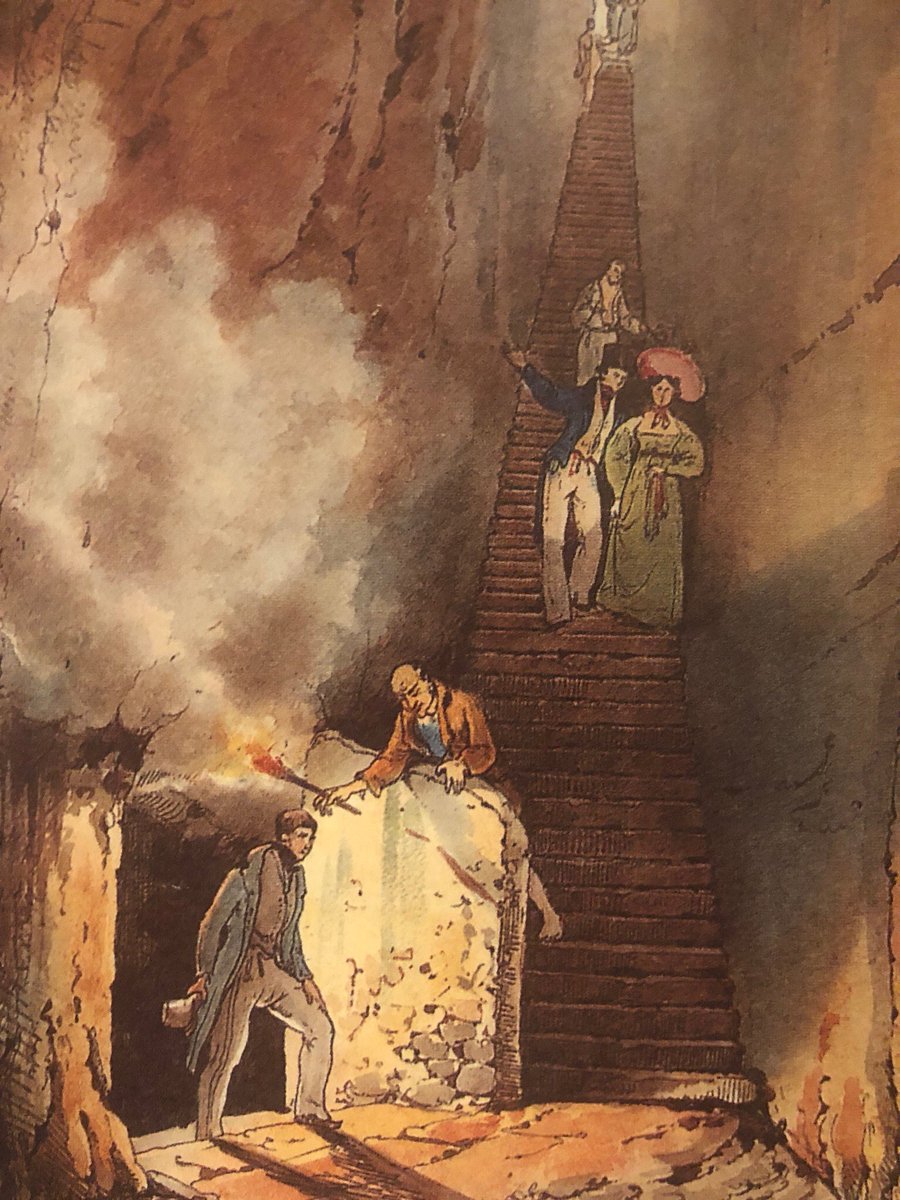
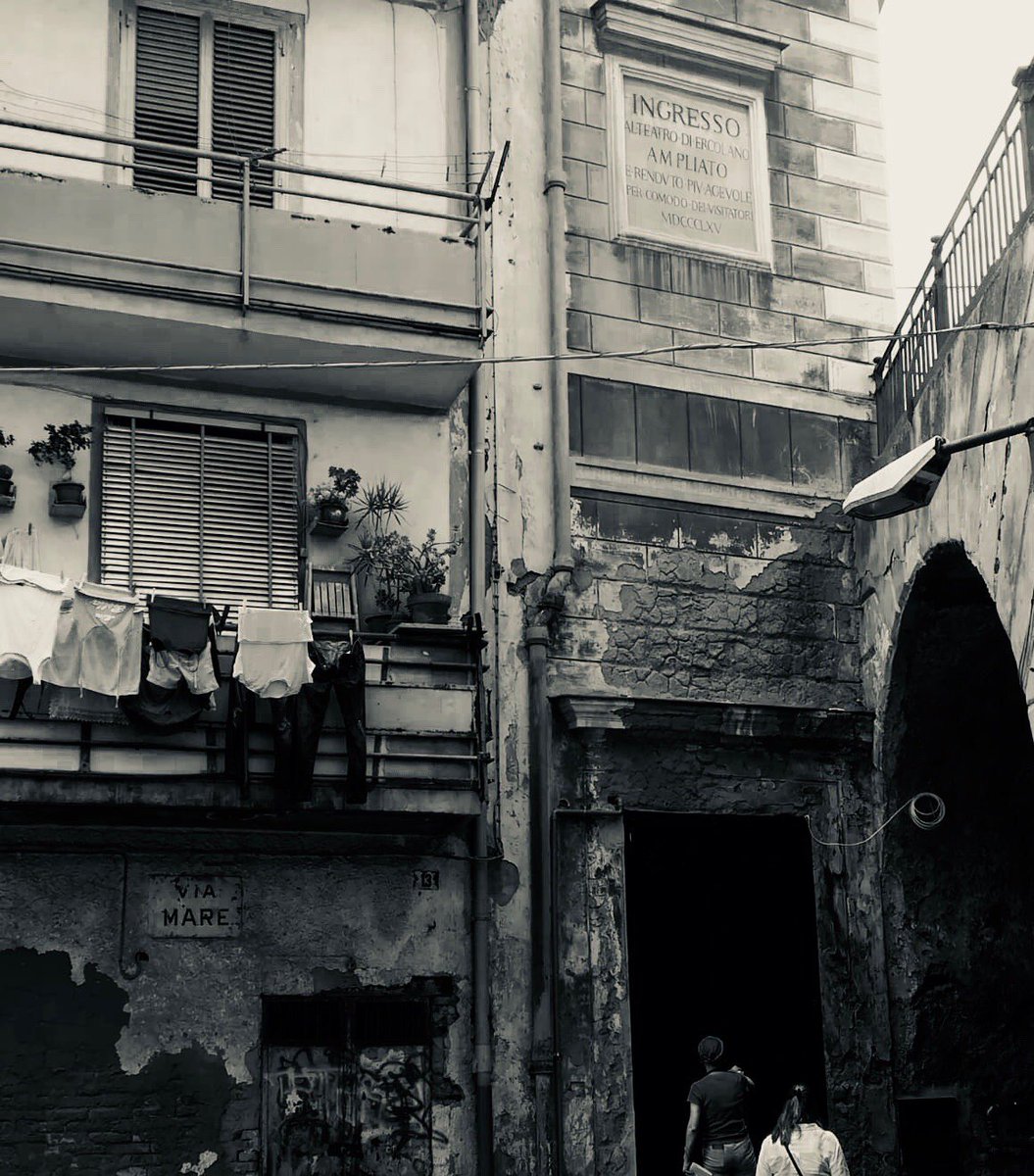
In 1709 a farmer, Ambrogio Nocerino, was digging a well in Resina & deep at the bottom he hauled out some marble fragments. The well had hit directly upon the stage area of the theatre in Herculaneum.
It’s an incredibly powerful experience to stand & look up that same well today.
It’s an incredibly powerful experience to stand & look up that same well today.
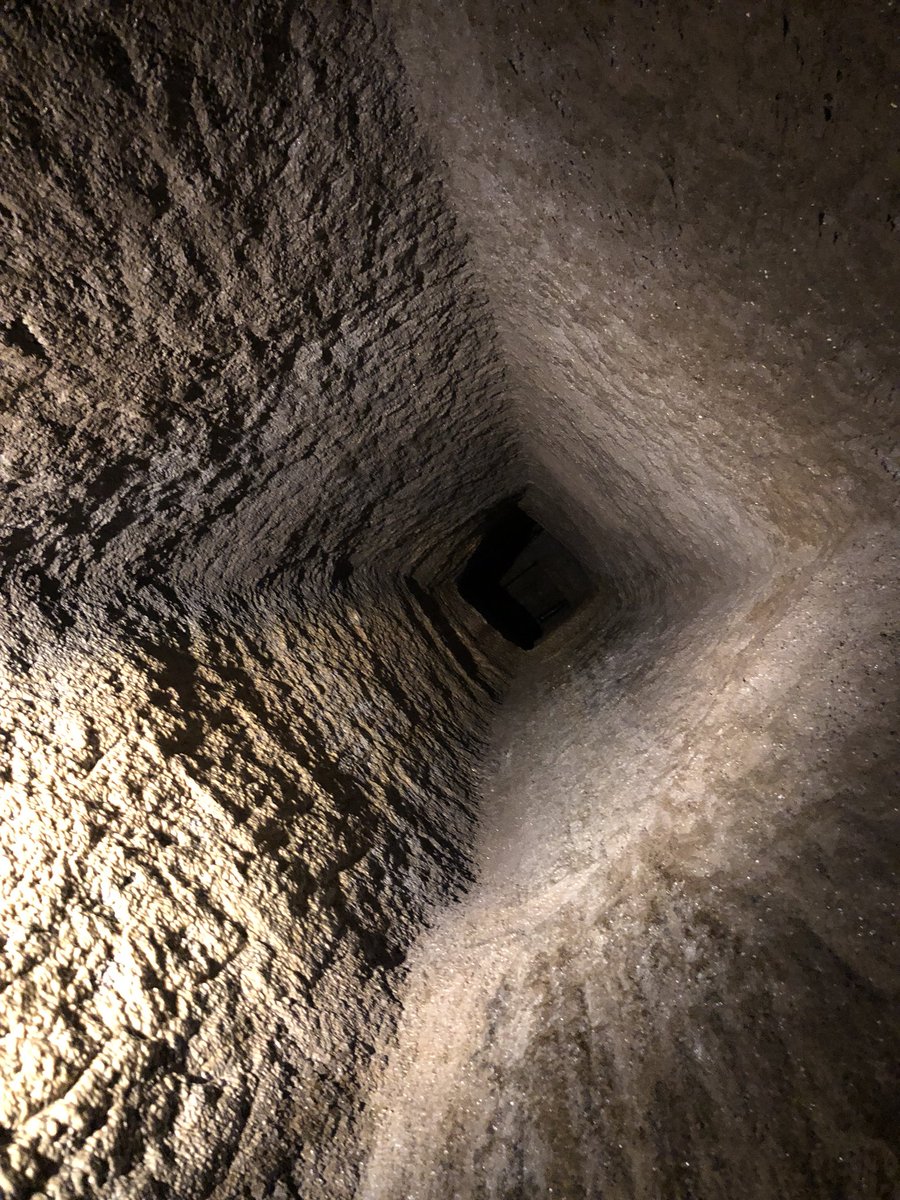
Ambrogio sold the marble to a man who was working for Prince d’Elbeuf who in turn was in the process of building a new villa in nearby Portici & was looking to decorate it.
Image: Joseph Rebell 1818, ‘The Mole at Portici’ with Villa d’Elbeuf on left.
Image: Joseph Rebell 1818, ‘The Mole at Portici’ with Villa d’Elbeuf on left.

On learning of the marble finds, the Prince enlarged the farmer’s well & by digging a network of tunnels, began robbing the building he thought was a Temple to Hercules, of its statuary, columns & marble.
Only a few panels of giallo antico marble remain in situ by a column base.



Only a few panels of giallo antico marble remain in situ by a column base.
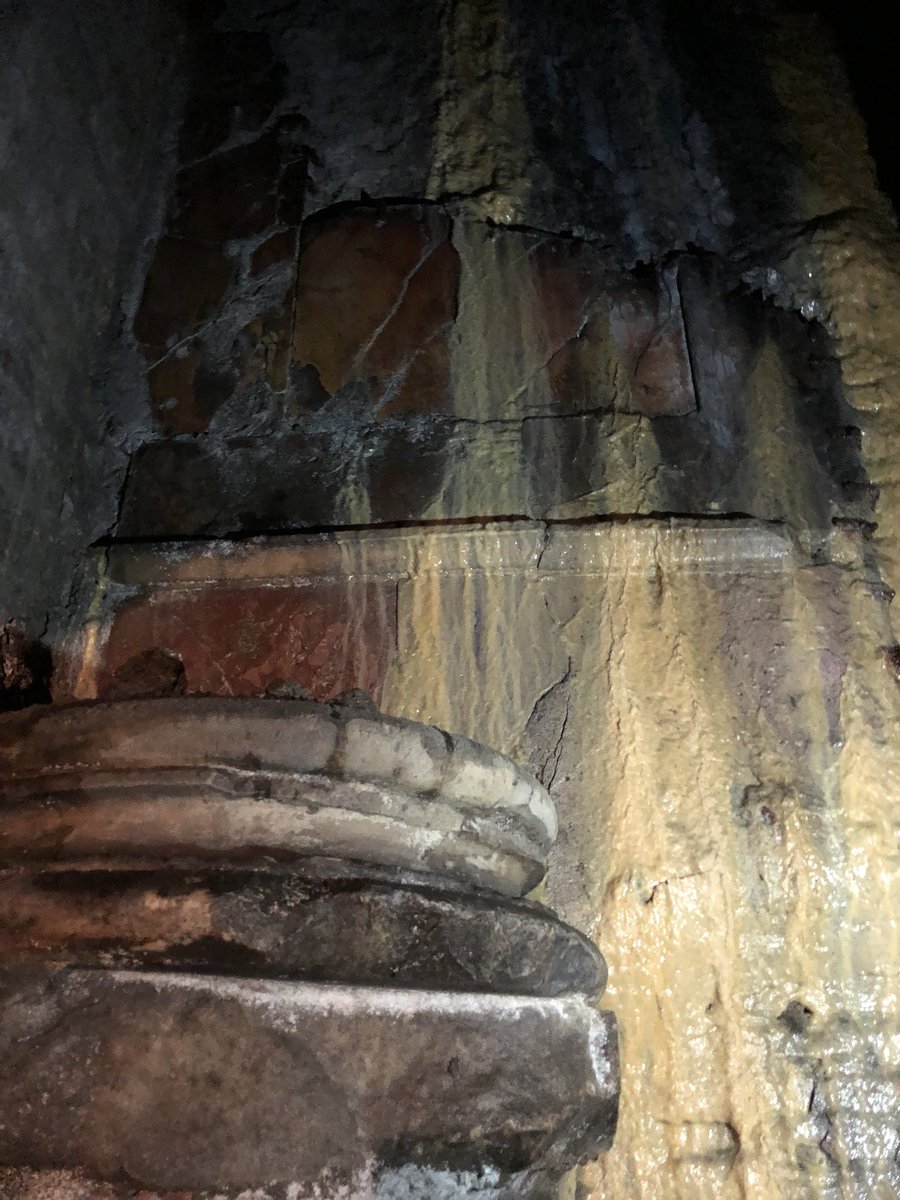
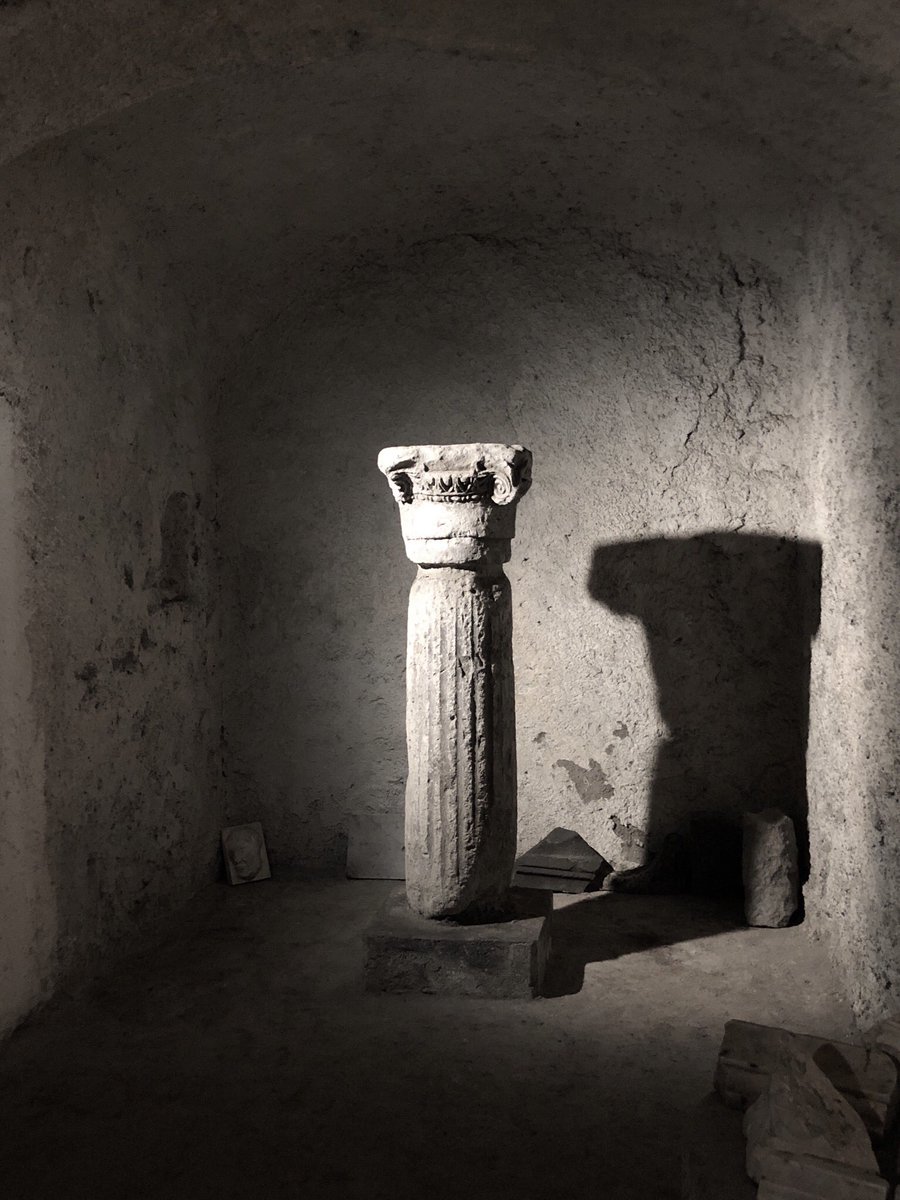
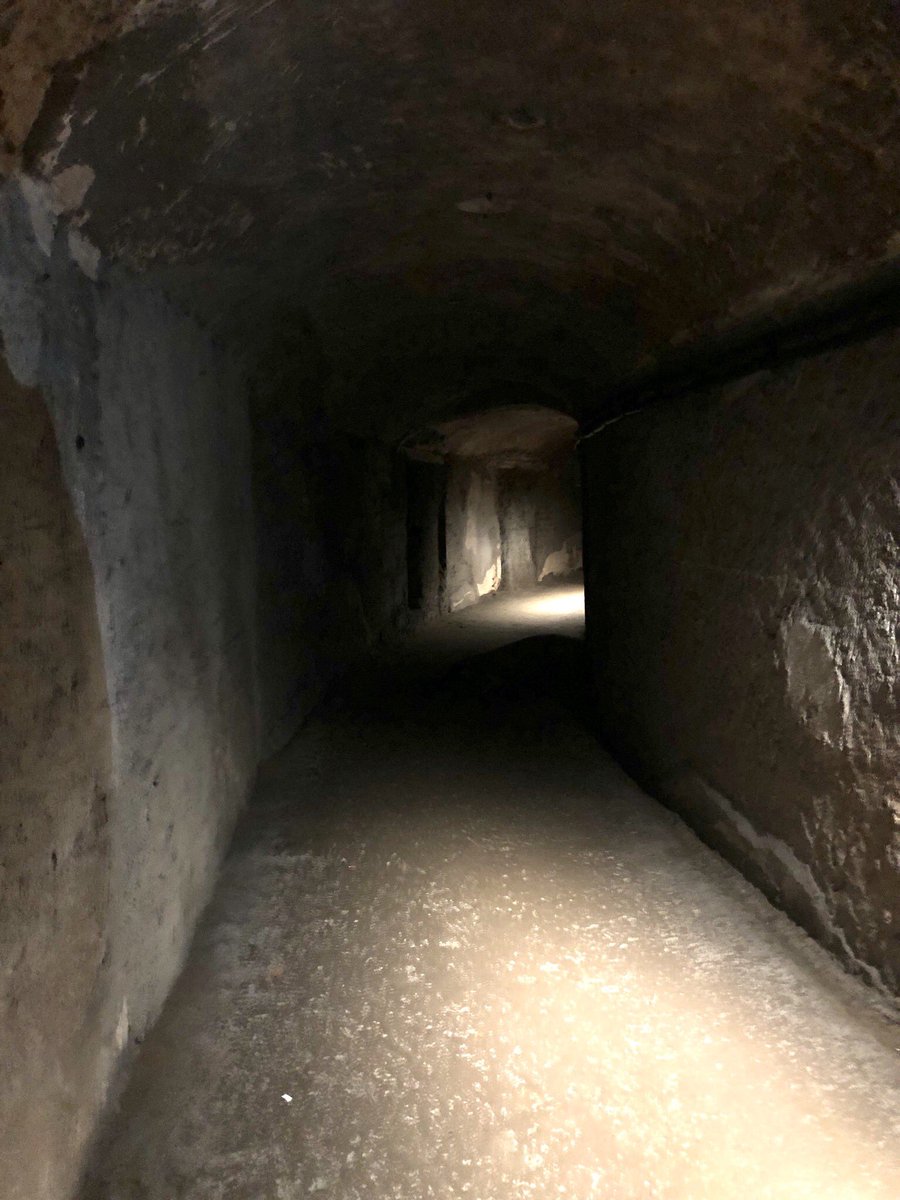
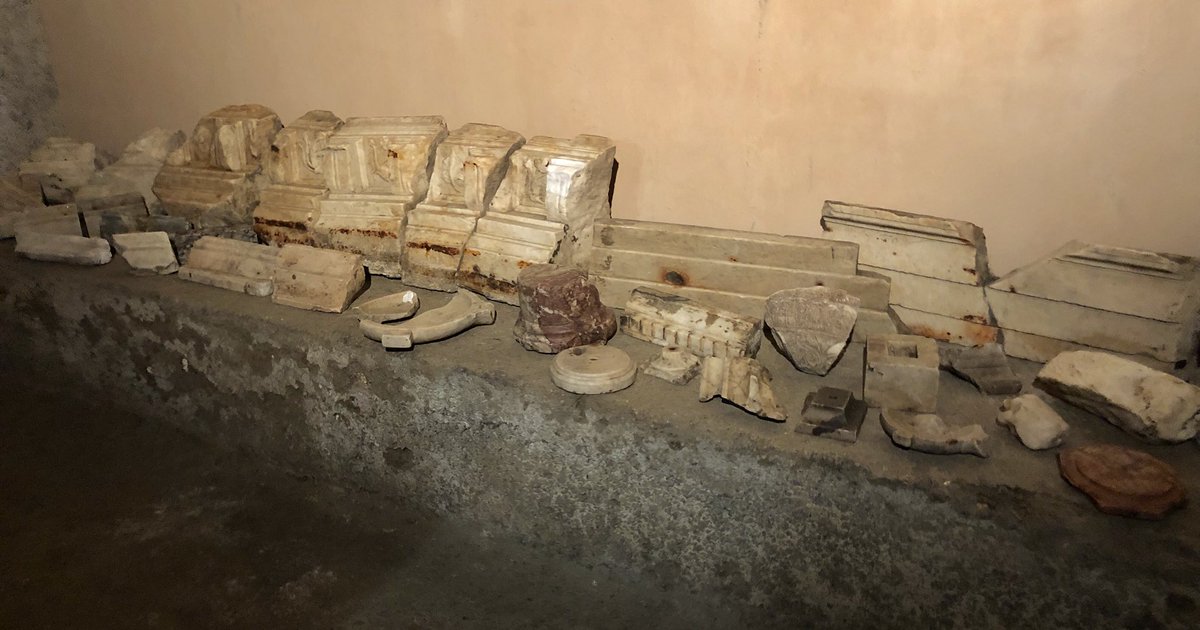
The first statuary to be found were ‘The Herculaneum Women’ dating to mid 1st century AD. They were gifted to Prince Eugene of Savoy in Vienna by D’Elbeuf.
Images @GettyMuseum:
1&2: getty.edu/art/installati…;
3&4: 1734 drawings featuring the statues getty.edu/art/exhibition…



Images @GettyMuseum:
1&2: getty.edu/art/installati…;
3&4: 1734 drawings featuring the statues getty.edu/art/exhibition…
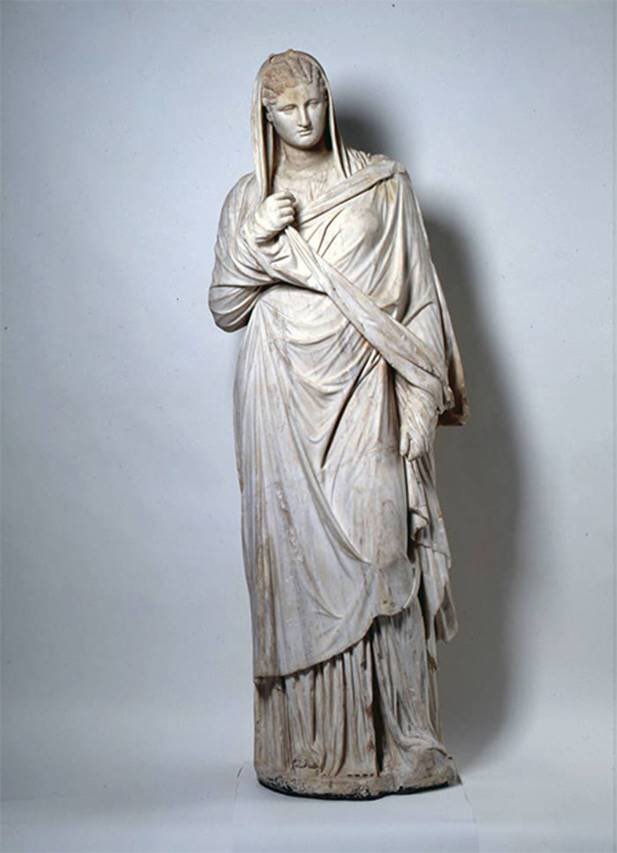
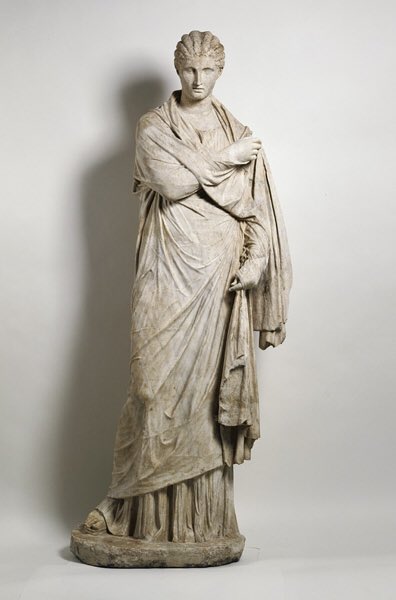
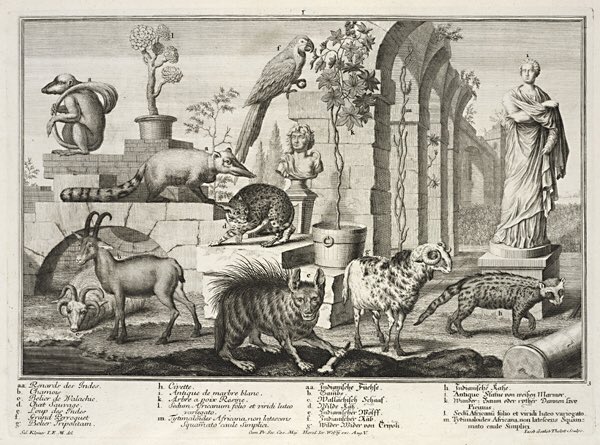
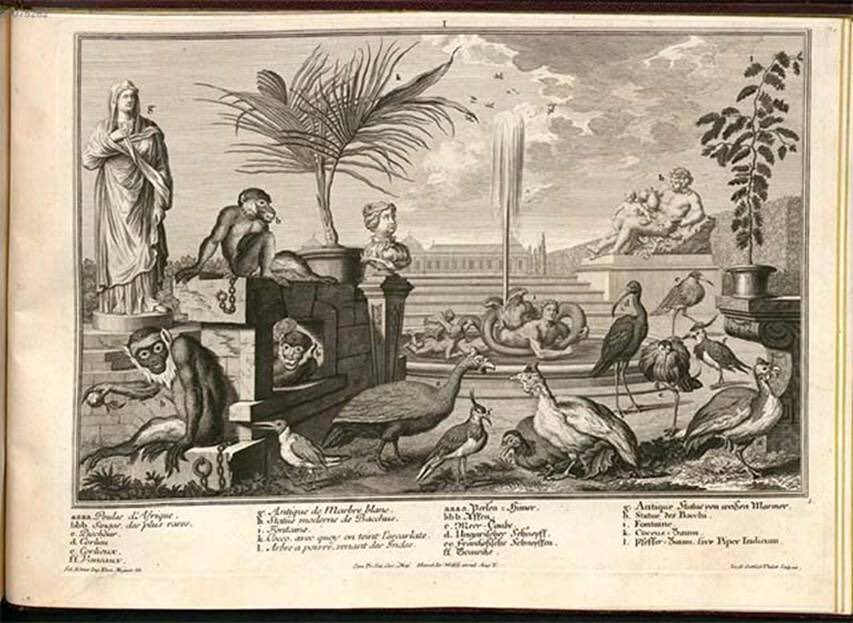
By 1734 the Bourbon, Charles VII, ruled in Naples & new excavations were begun. The building was finally identified as a theatre by Marcello Venuti who published the discoveries in 1749.
Images: inscriptions found at this time made reference to a theatre digi.ub.uni-heidelberg.de/diglit/venuti1…

Images: inscriptions found at this time made reference to a theatre digi.ub.uni-heidelberg.de/diglit/venuti1…
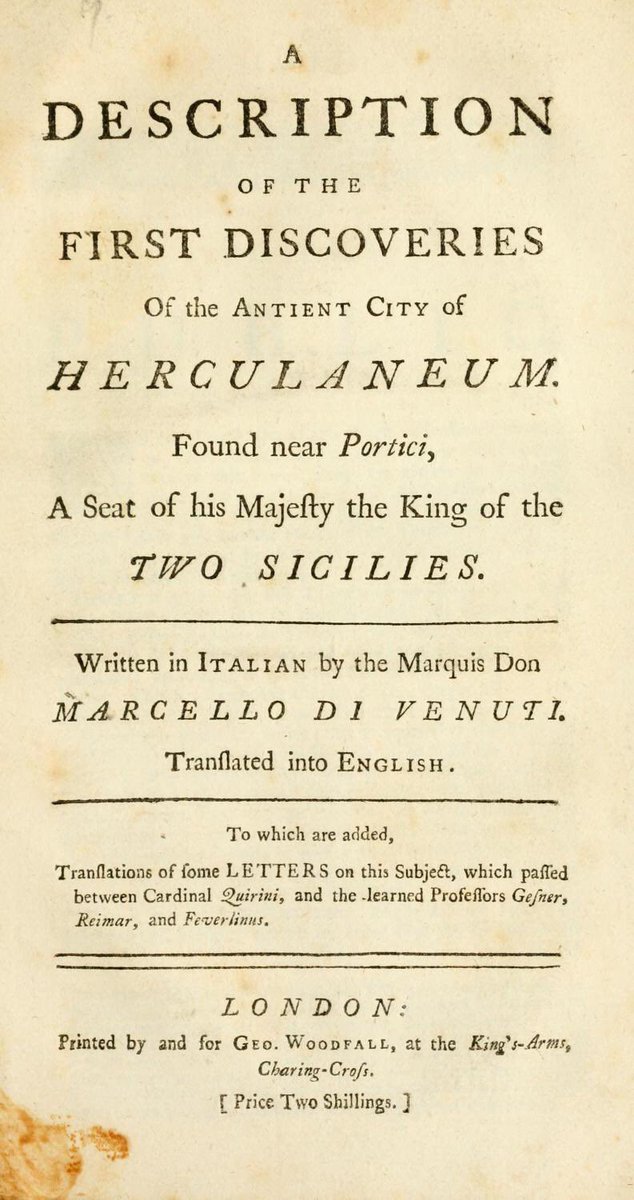
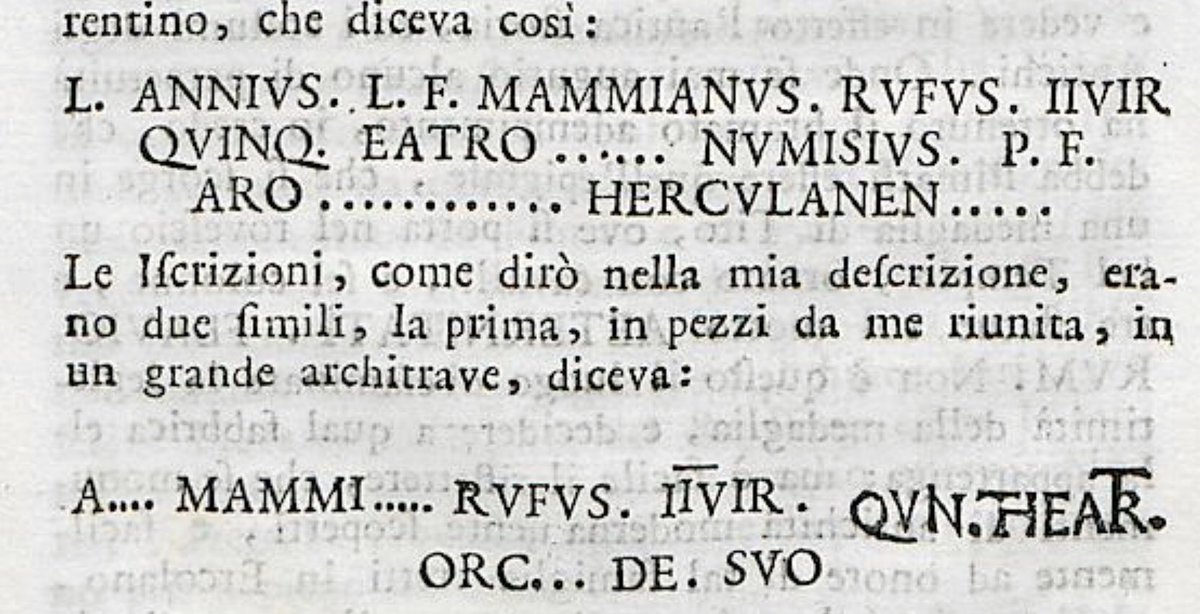
A Spanish engineer, Rocque Joachim de Alcubierre, under orders of Charles VII of Bourbon, made a plan of the tunnels. Finds were taken to Charles Bourbon’s Royal Palace in Portici and housed in his museum.
Image: Alcubierre 1739 ‘L’ marks Ambrogio’s well
herculaneum.uk/Maps/maps%20he…
Image: Alcubierre 1739 ‘L’ marks Ambrogio’s well
herculaneum.uk/Maps/maps%20he…
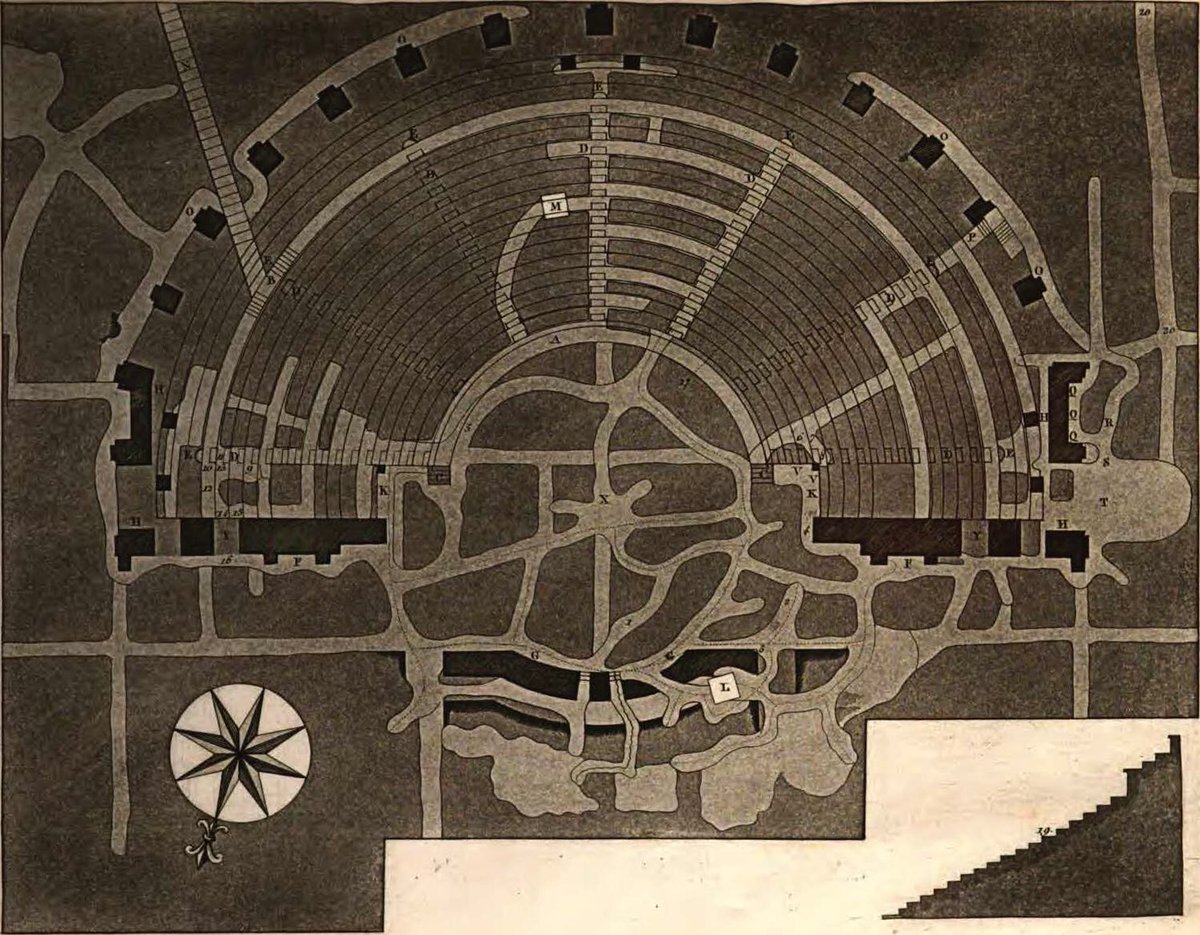
There was much secrecy over the finds. Goethe, who visited the Royal Museum commented:
“We entered the museum well recommended and were well received. But even so, we were not permitted to sketch anything”
— Goethe 1787 ‘Italian Journey’.
Images: Goethe 1787

“We entered the museum well recommended and were well received. But even so, we were not permitted to sketch anything”
— Goethe 1787 ‘Italian Journey’.
Images: Goethe 1787
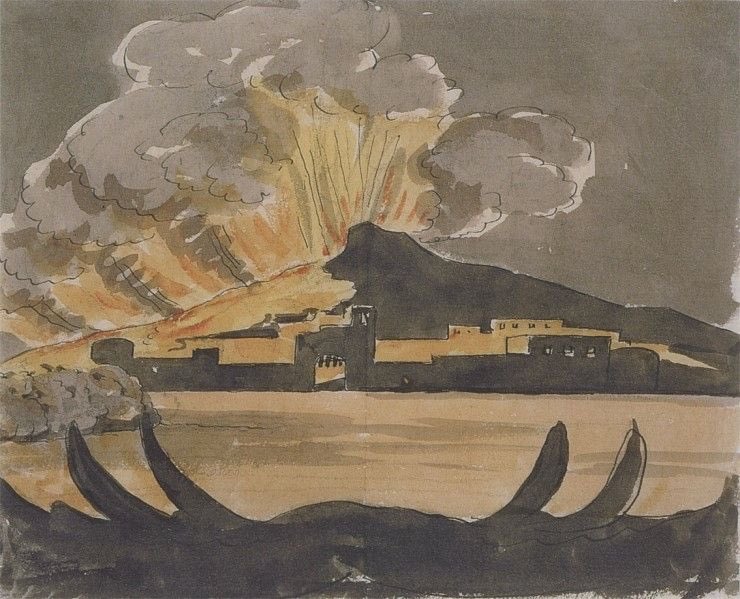
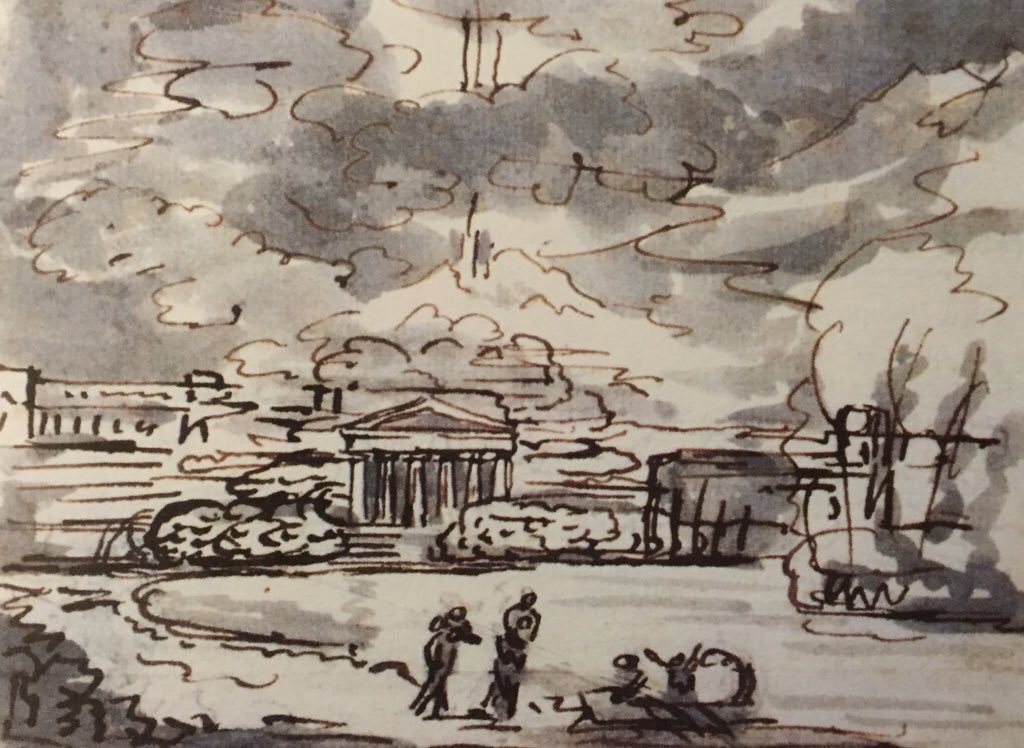
In order to facilitate the new Bourbon excavations, a wide shaft was opened to allow light and ventilation into the tunnels. Looking down the shaft, it opens onto a section of the seating area of the middle cavea of the theatre.
Image 3: Gigante 1800s
Image 4: Lemasie 1815



Image 3: Gigante 1800s
Image 4: Lemasie 1815
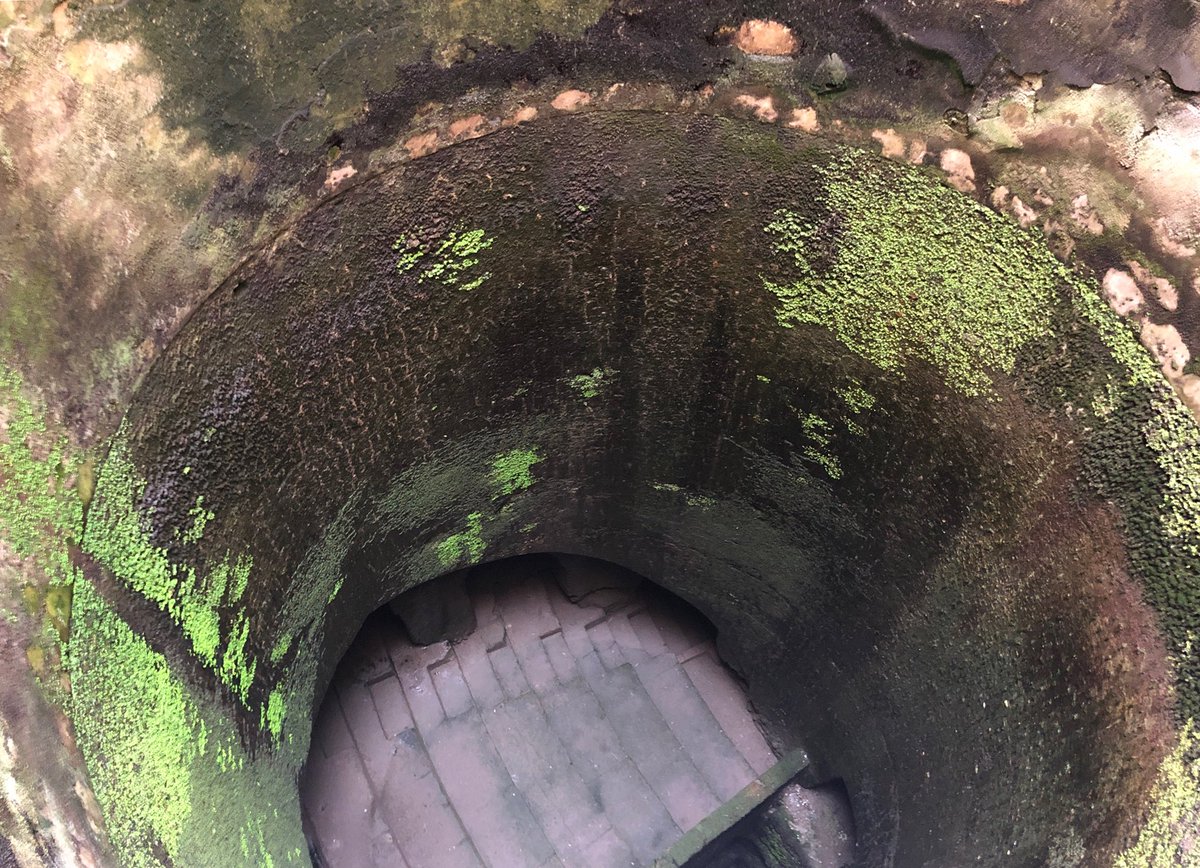
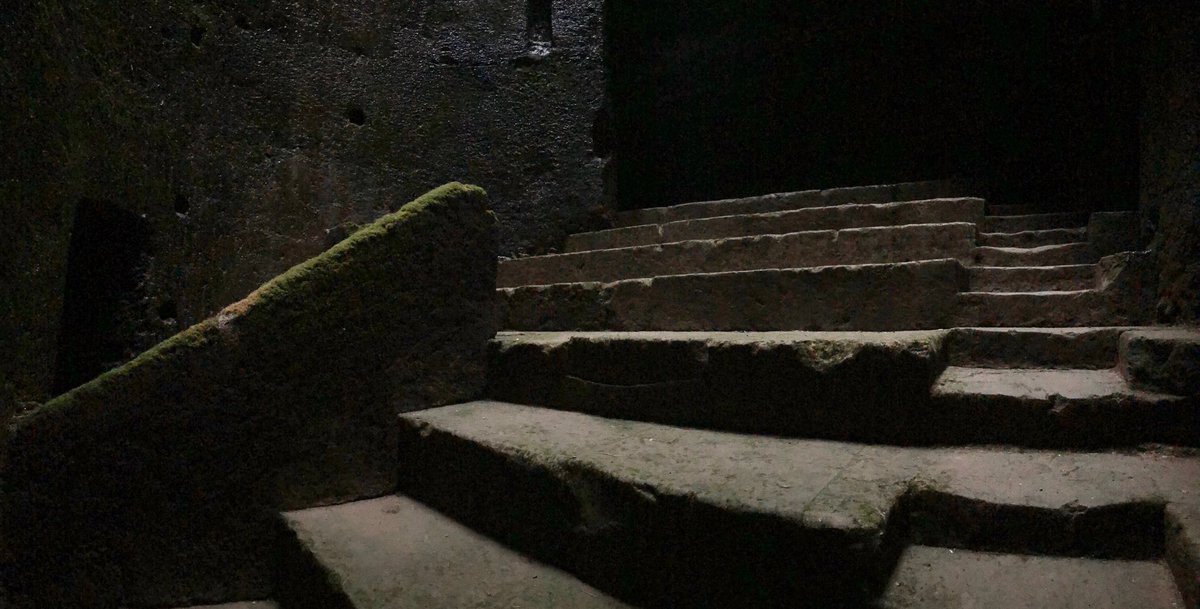


During the Bourbon excavations in 1746, Alcubierre reported finding two large equestrian statues of the family Nonii Balbi: father and son. The actual find spot is unknown though they might have come from a portico outside the theatre. 



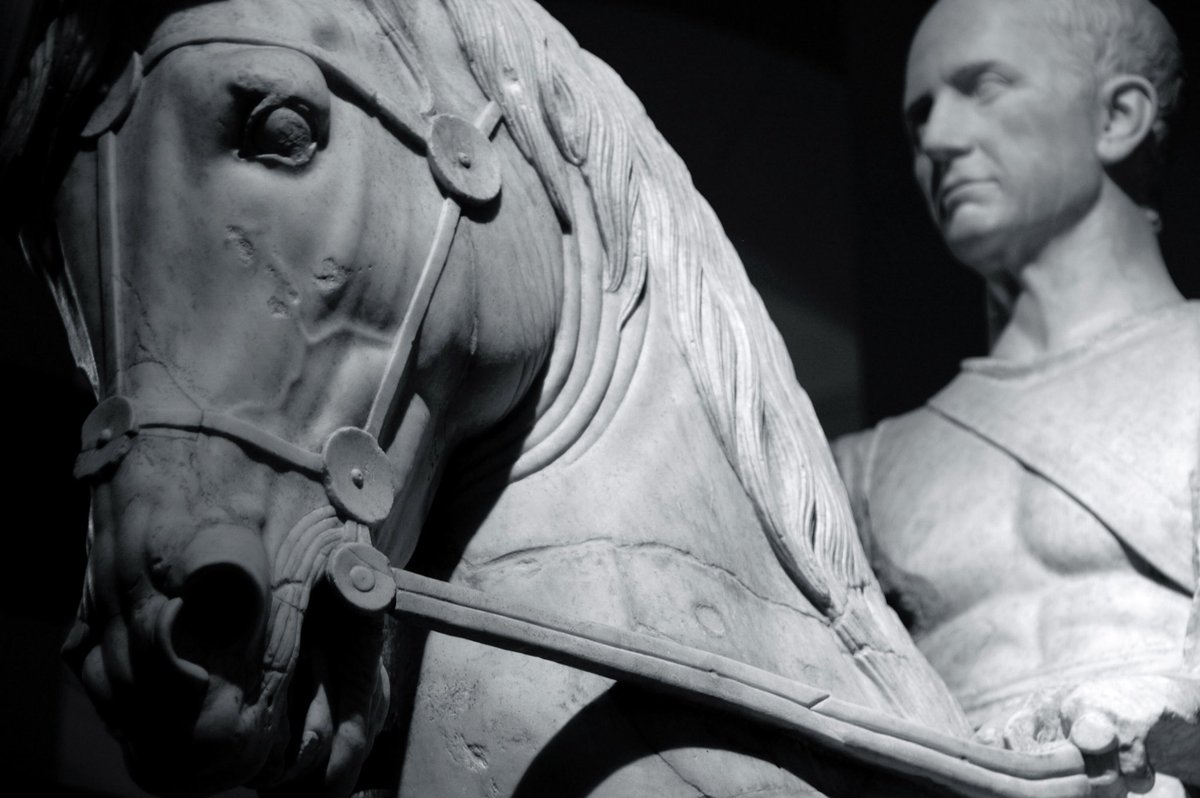
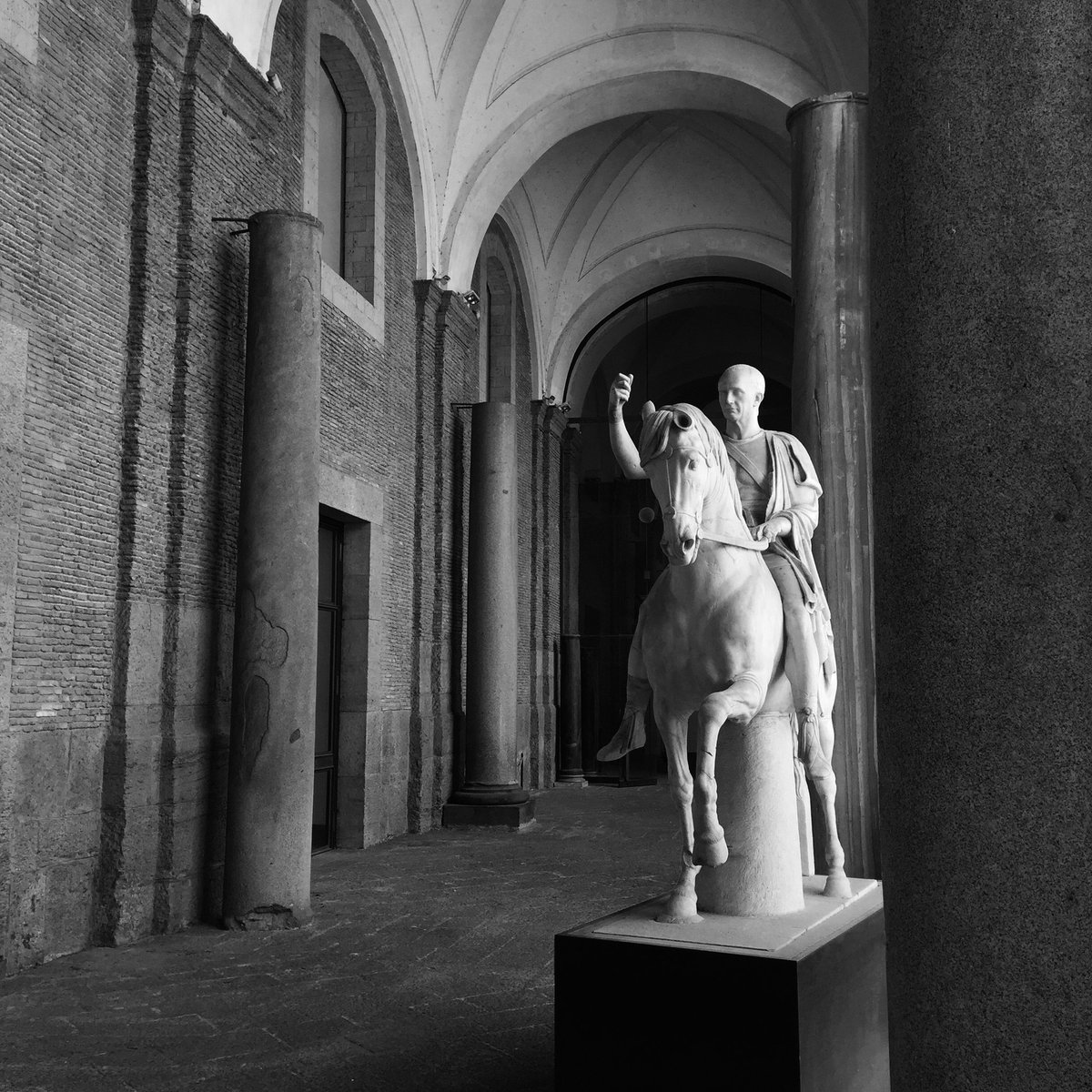
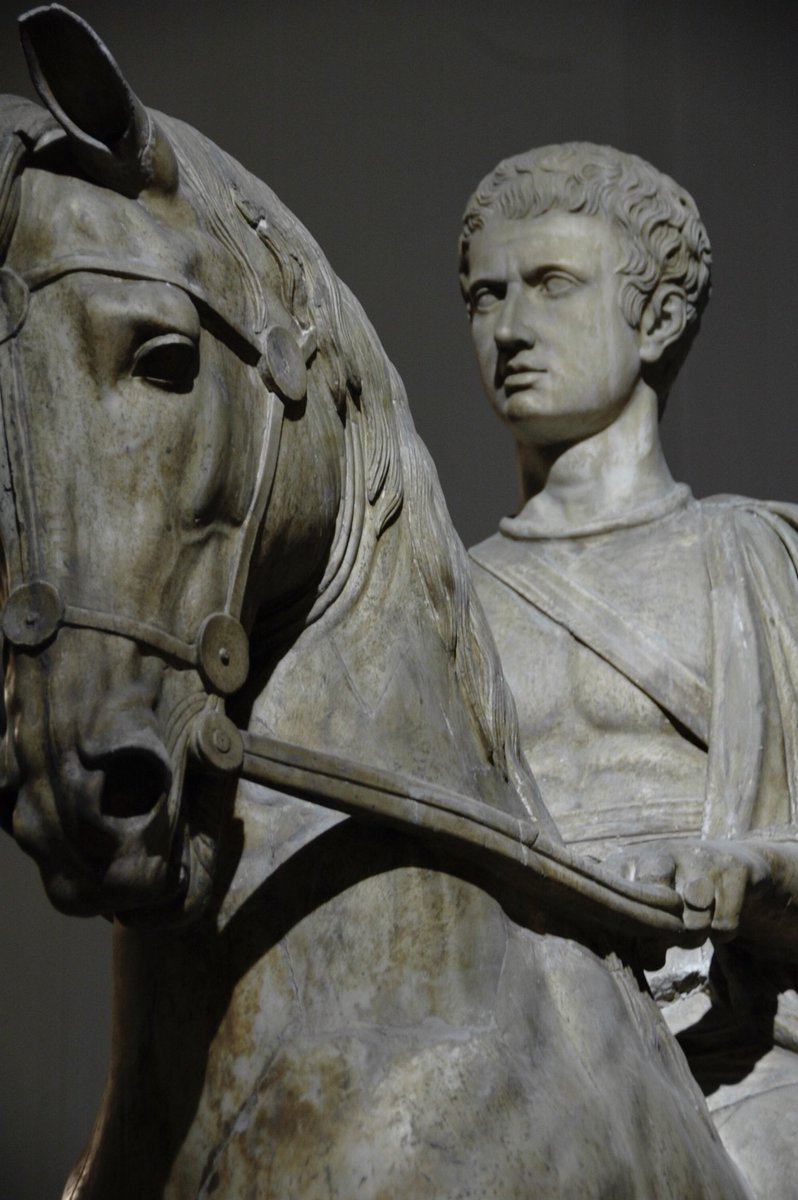
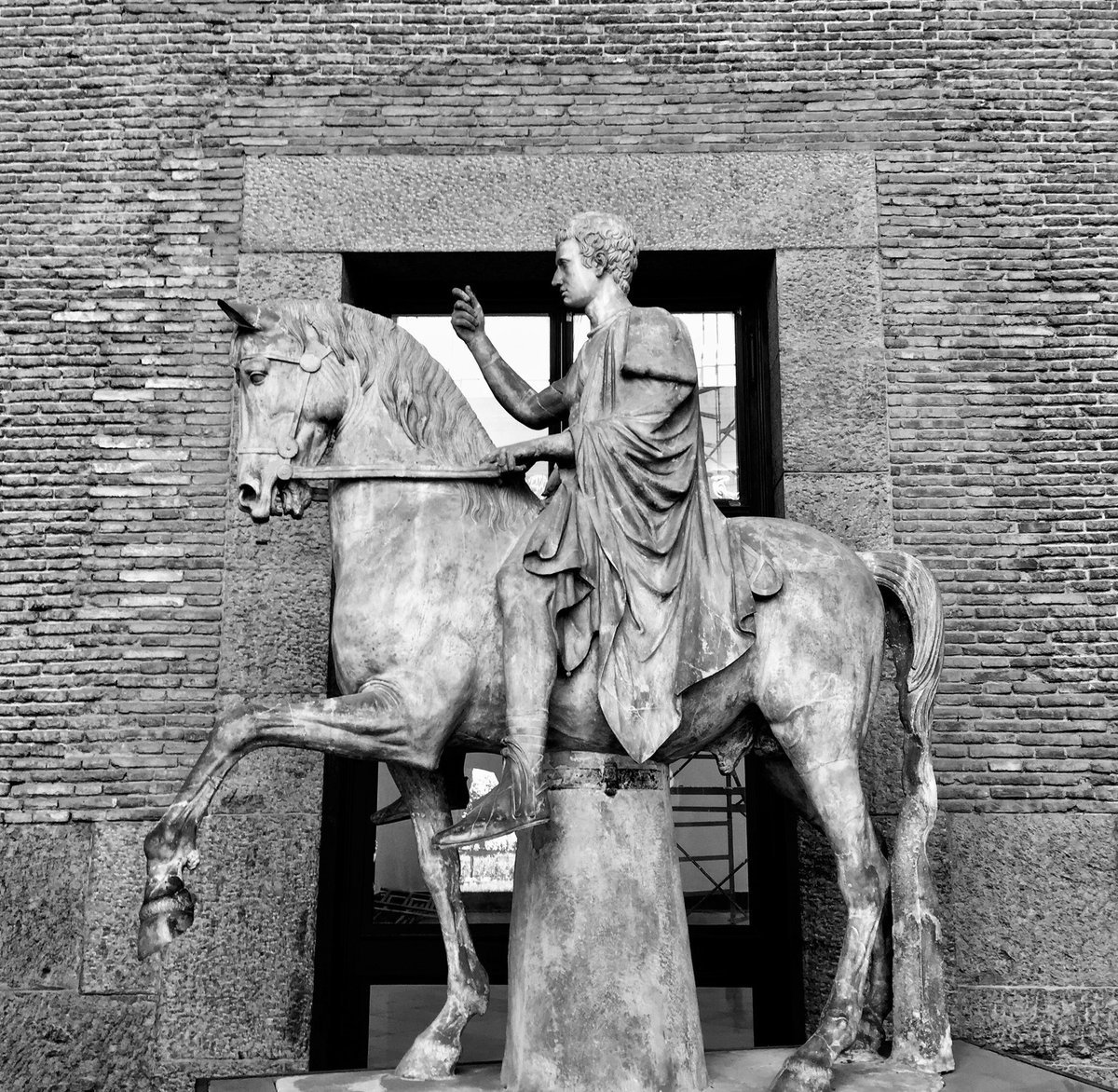
In the 1760s, when La Vega was heading the excavations of the theatre, two honorific inscriptions were found: those of M. Nonius Balbus and Ap. Claudius Pulcher. These remain on display at each end of the stage area (‘tribunal’).
Image 4: C19th watercolour by Giacinto Gigante



Image 4: C19th watercolour by Giacinto Gigante
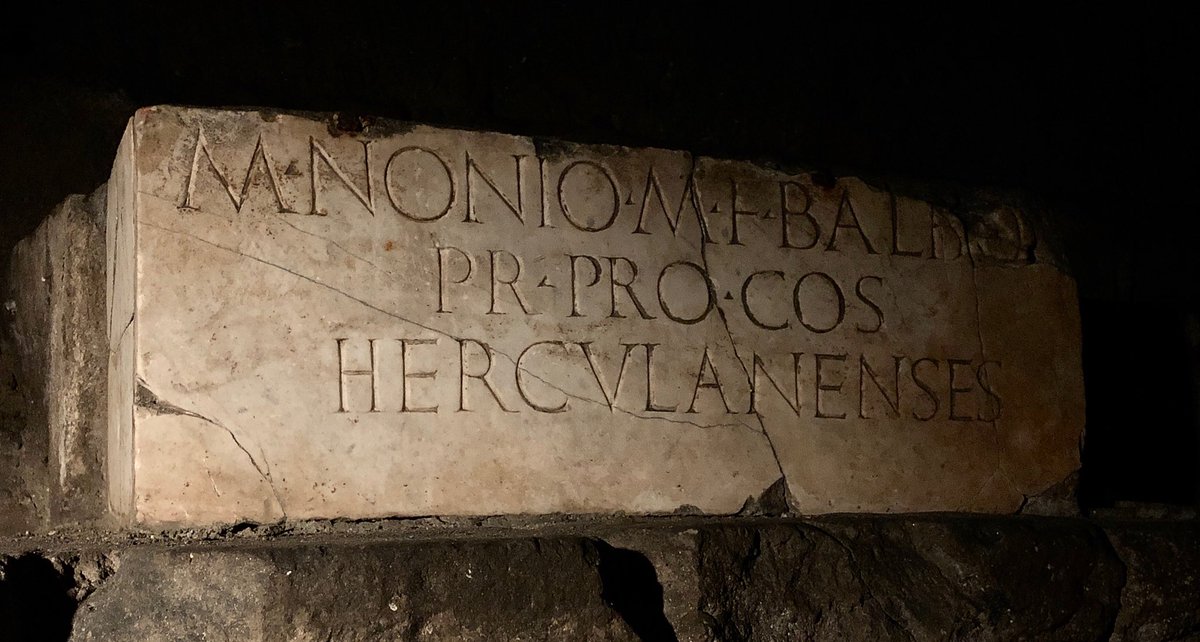
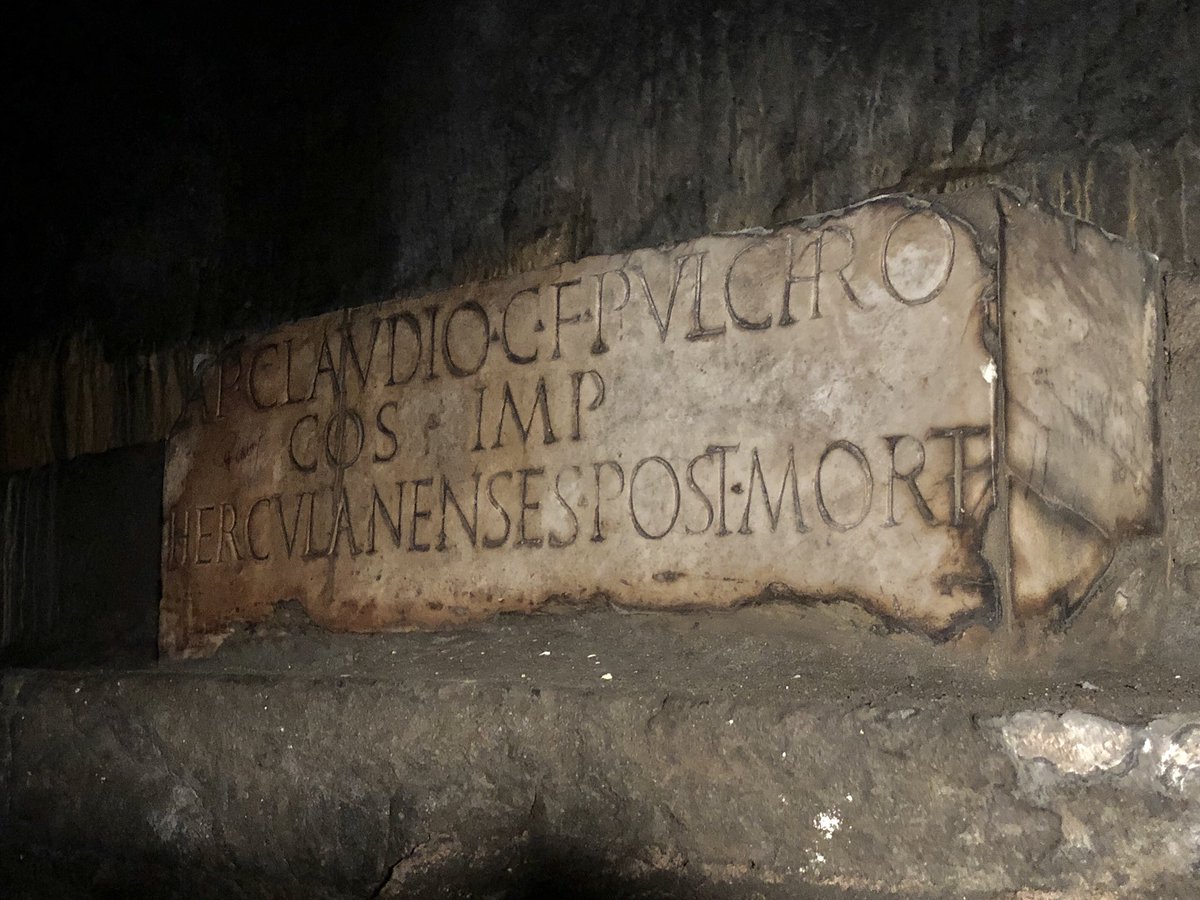
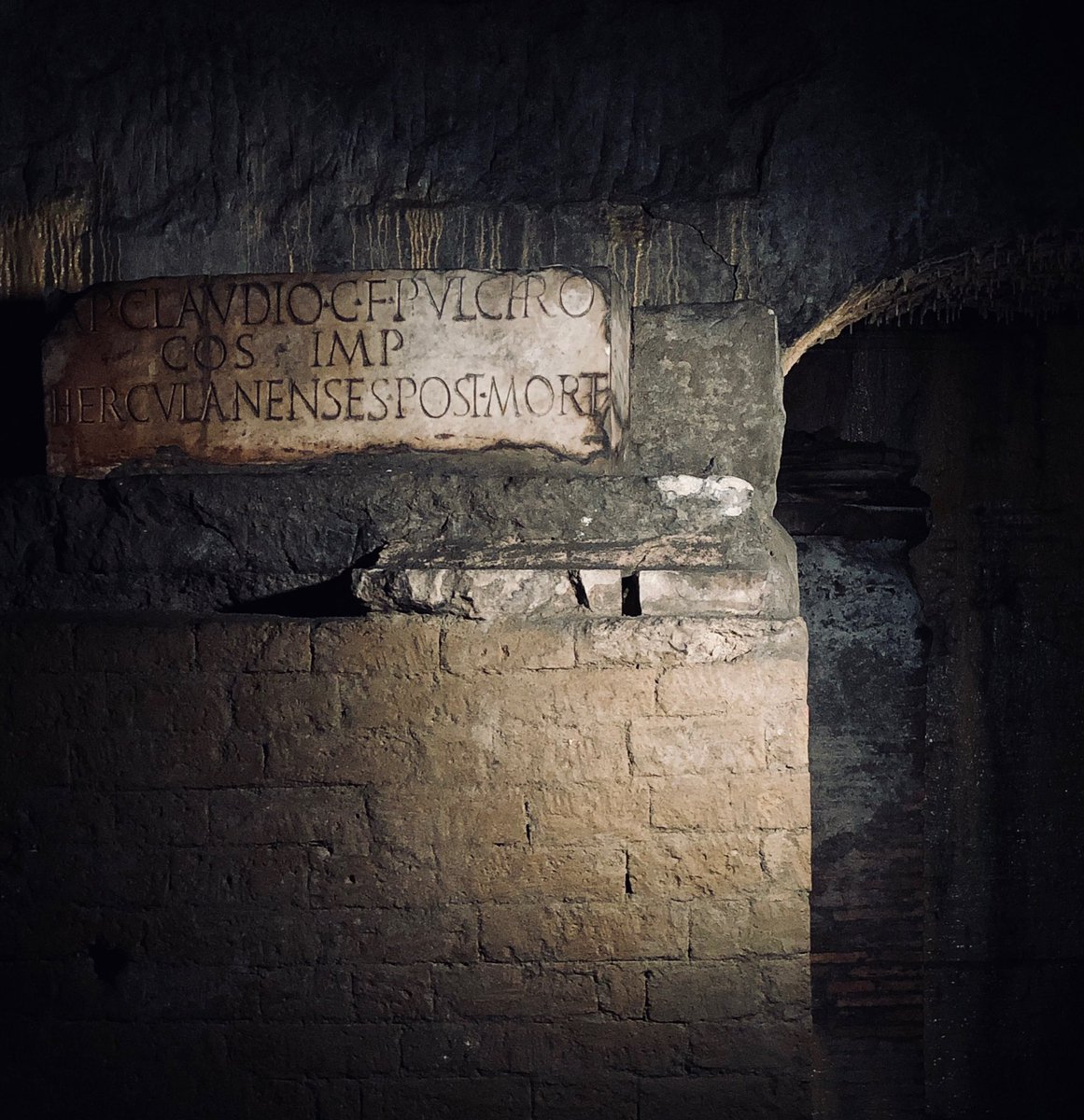

The theatre, being the only monument accessible in Herculaneum at this time, attracted Francesco Piranesi who went onto publish a book in 1783 containing elegant but innacurate reconstructions of the theatre.
Images: vesuvioweb.com/it/wp-content/…



Images: vesuvioweb.com/it/wp-content/…
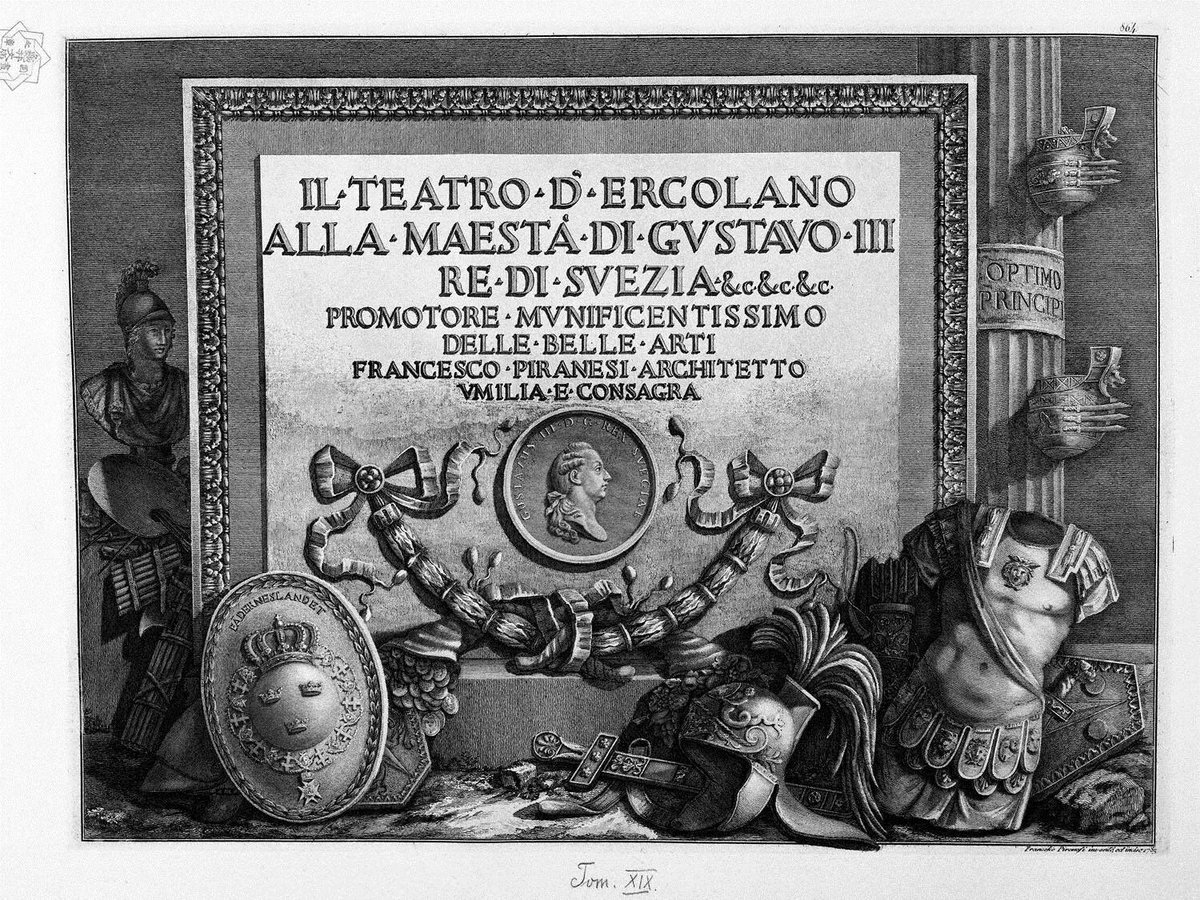
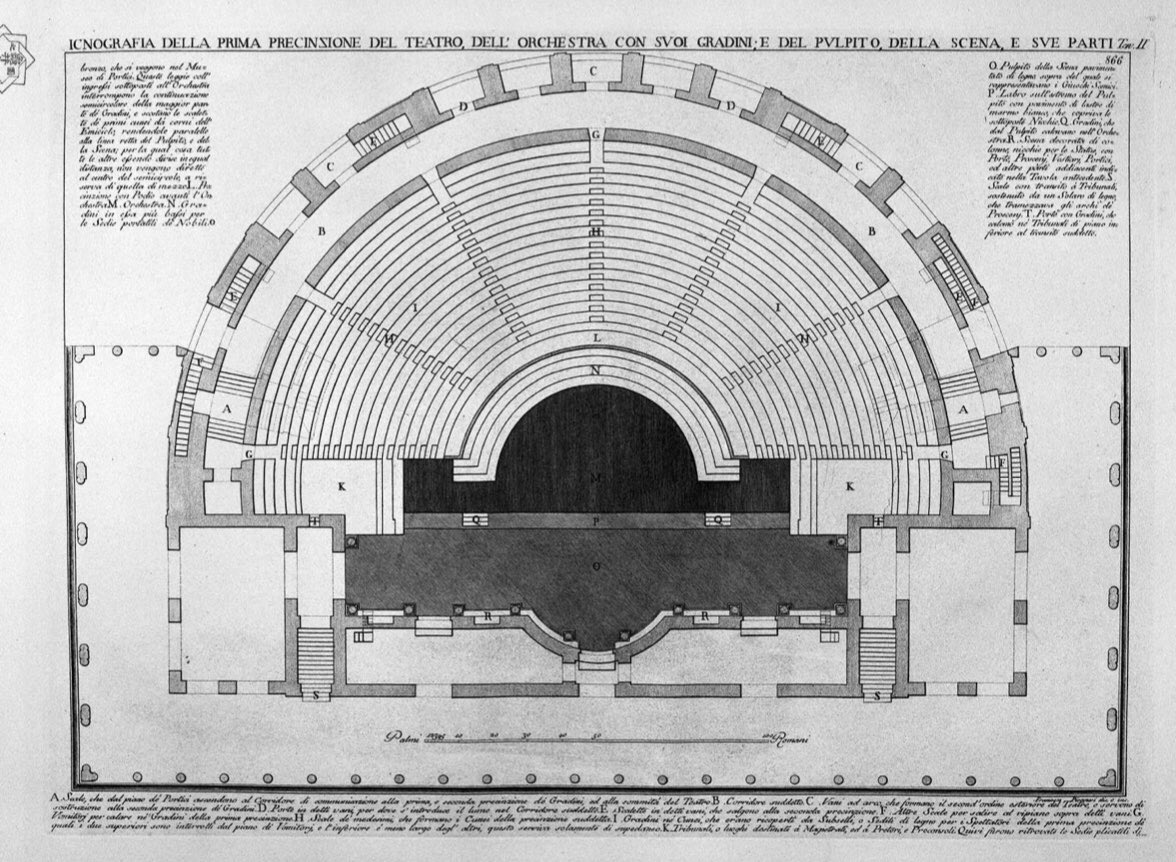
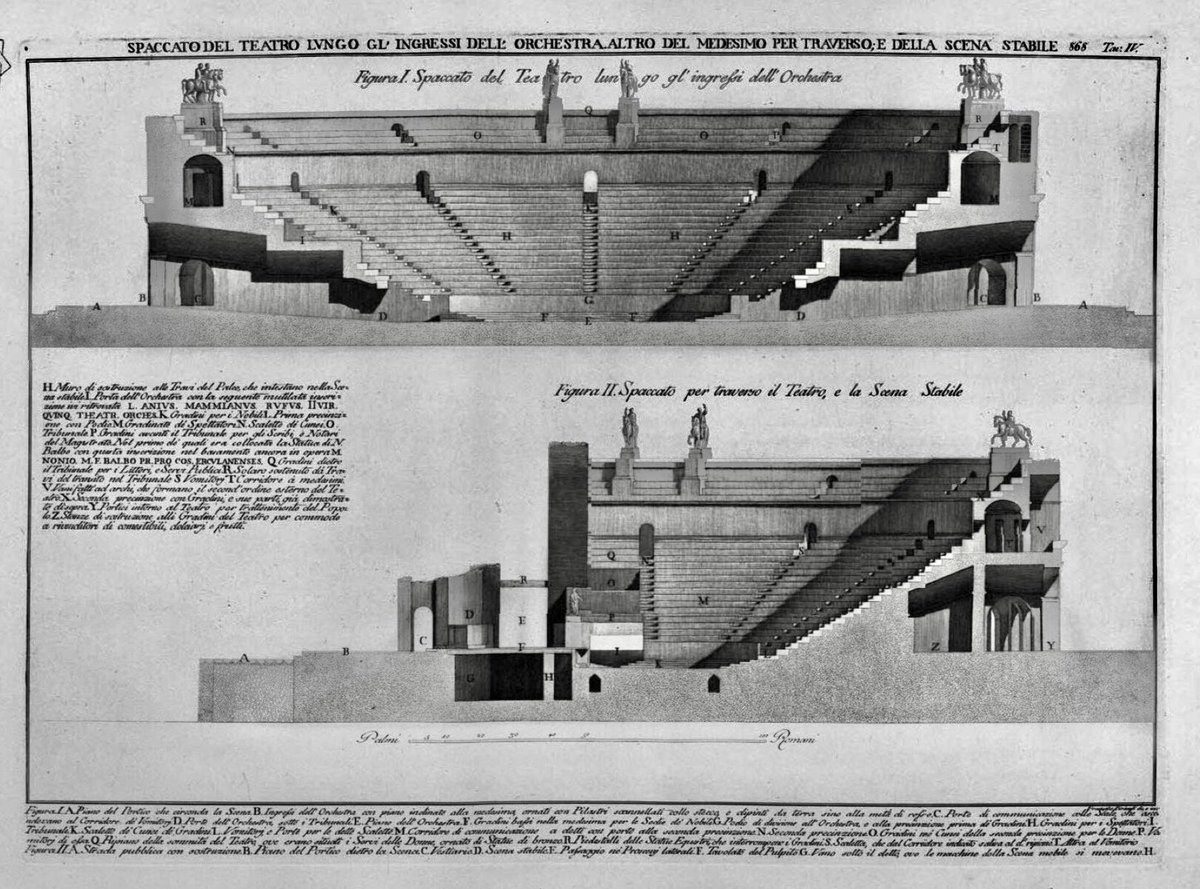
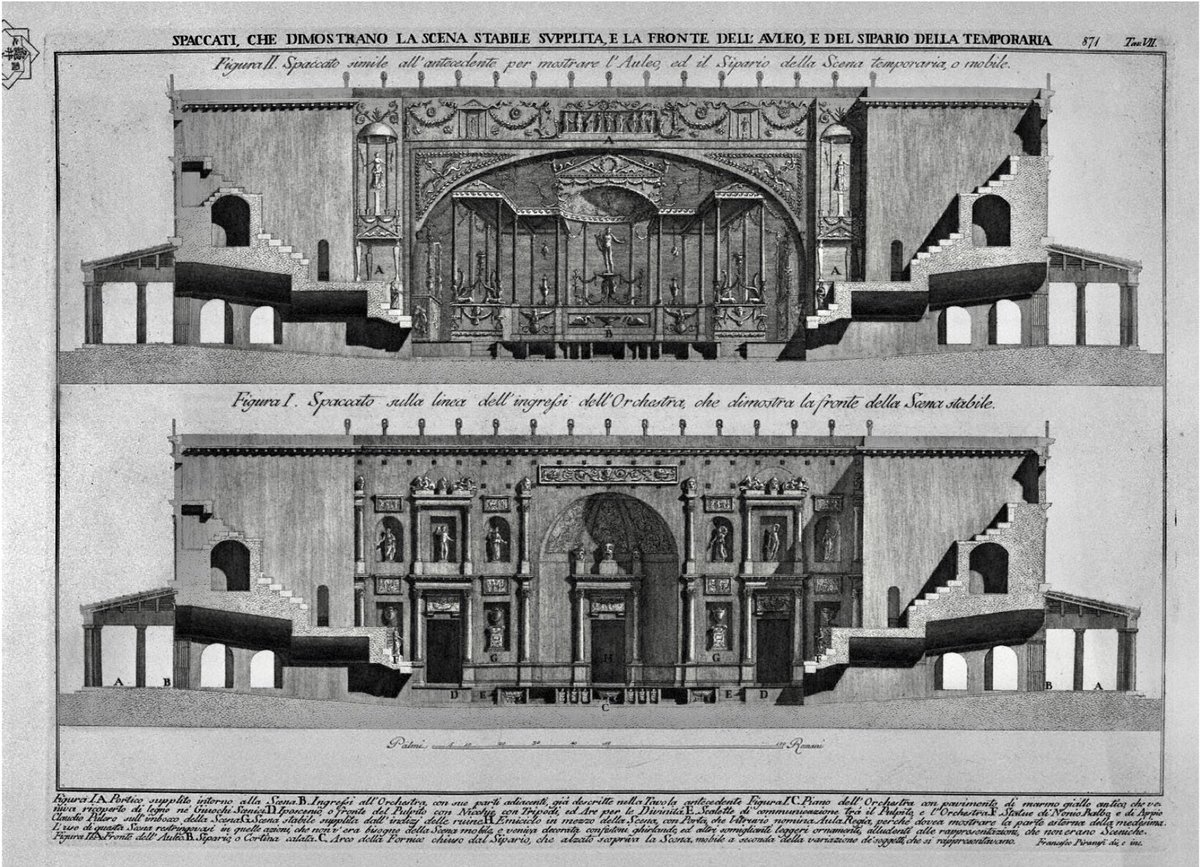
The theatre also attracted William Turner, the British artist, who visited in 1819 and two of his sketches record the inscriptions of Nonius Balbus and Claudius Pulcher.
Images: @Tate tate.org.uk/art/artworks/t… and tate.org.uk/art/artworks/t…

Images: @Tate tate.org.uk/art/artworks/t… and tate.org.uk/art/artworks/t…
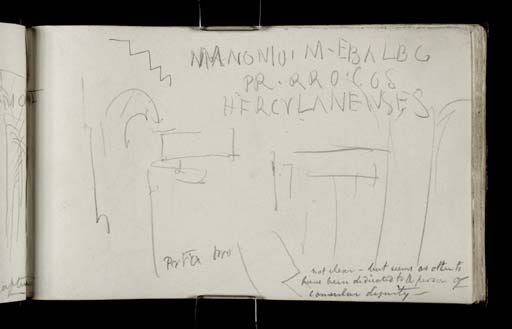

Engineer, Karl Weber, excavated the front of the stage in 1762 & robbed it of its marble.
Niches along the front of the stage (‘proscaenium’) open into the orchestra.
Images: 1. View of stage; 2. View across orchestra; 3. G. Gigante watercolour; 4. Mazois reconstruction 19th C.



Niches along the front of the stage (‘proscaenium’) open into the orchestra.
Images: 1. View of stage; 2. View across orchestra; 3. G. Gigante watercolour; 4. Mazois reconstruction 19th C.
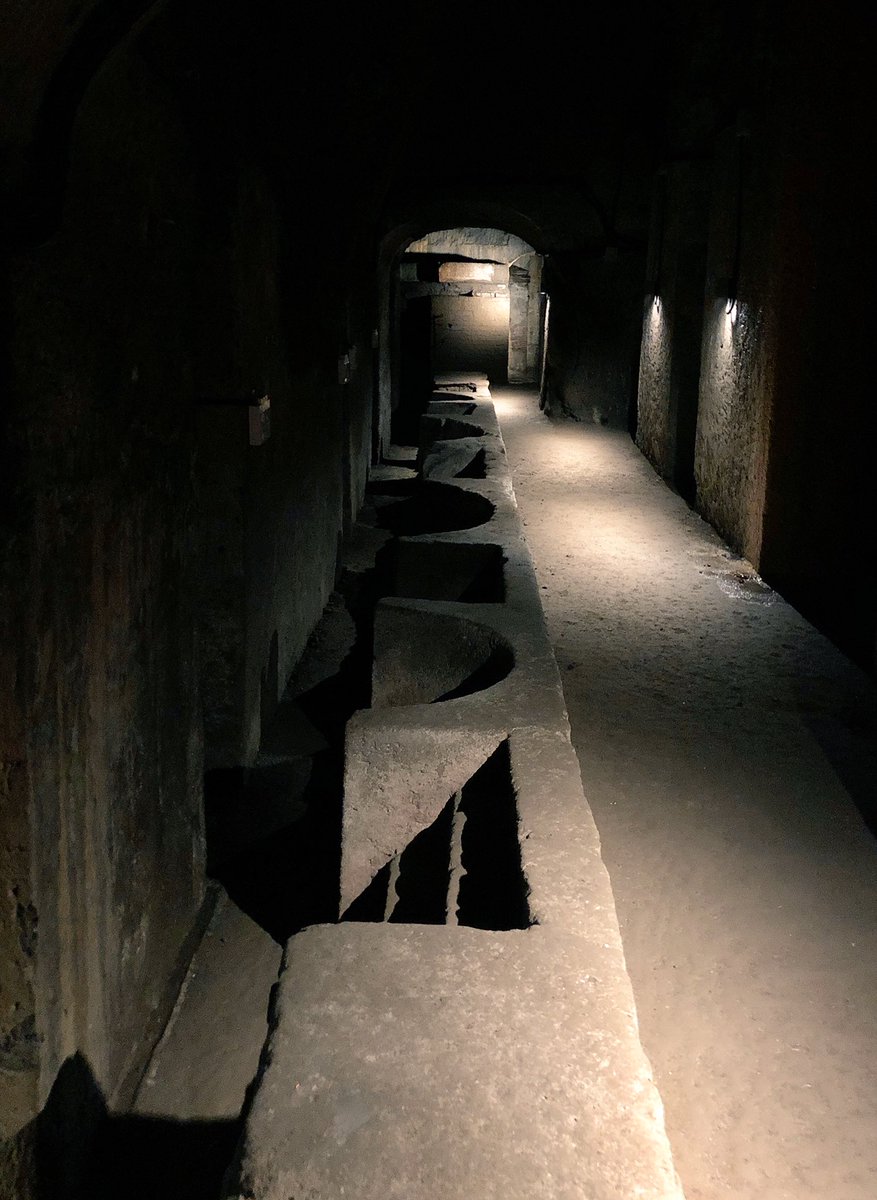
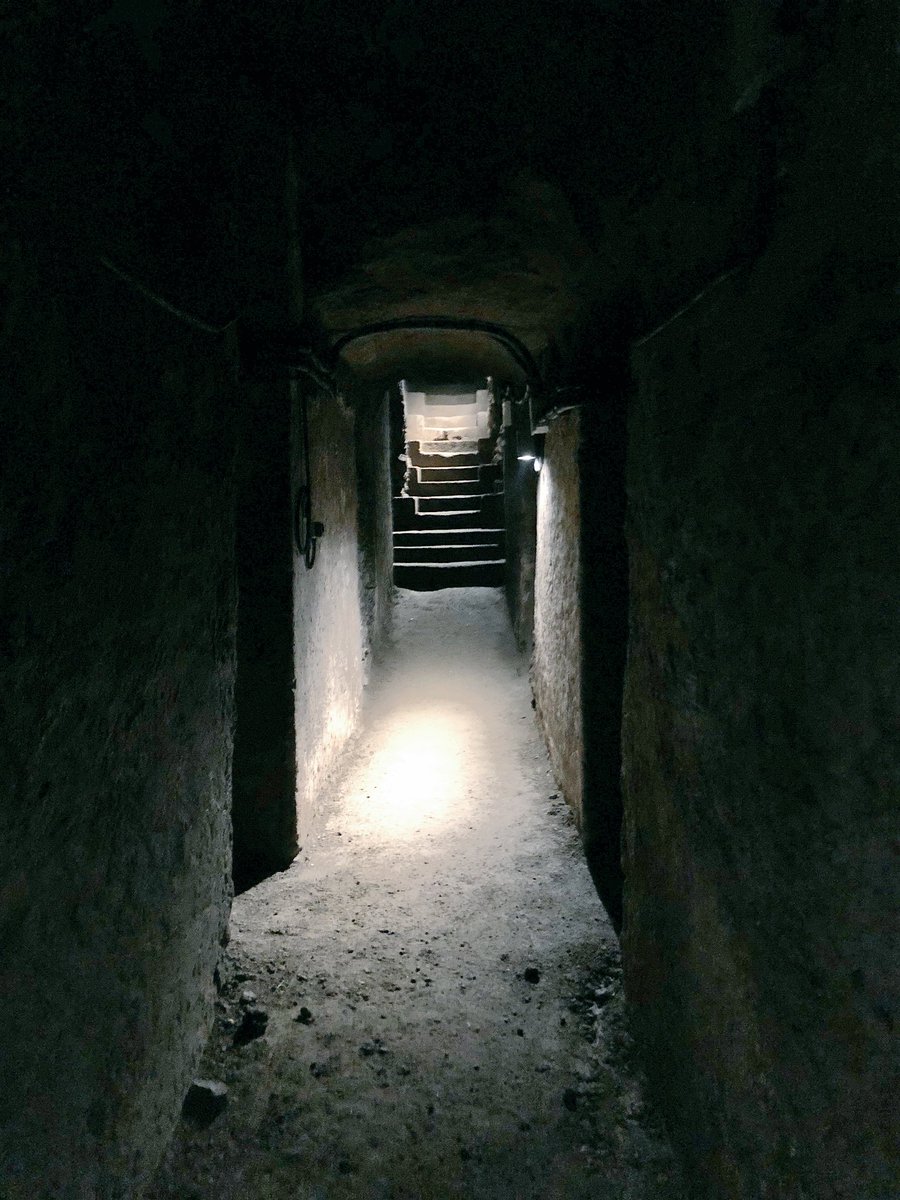

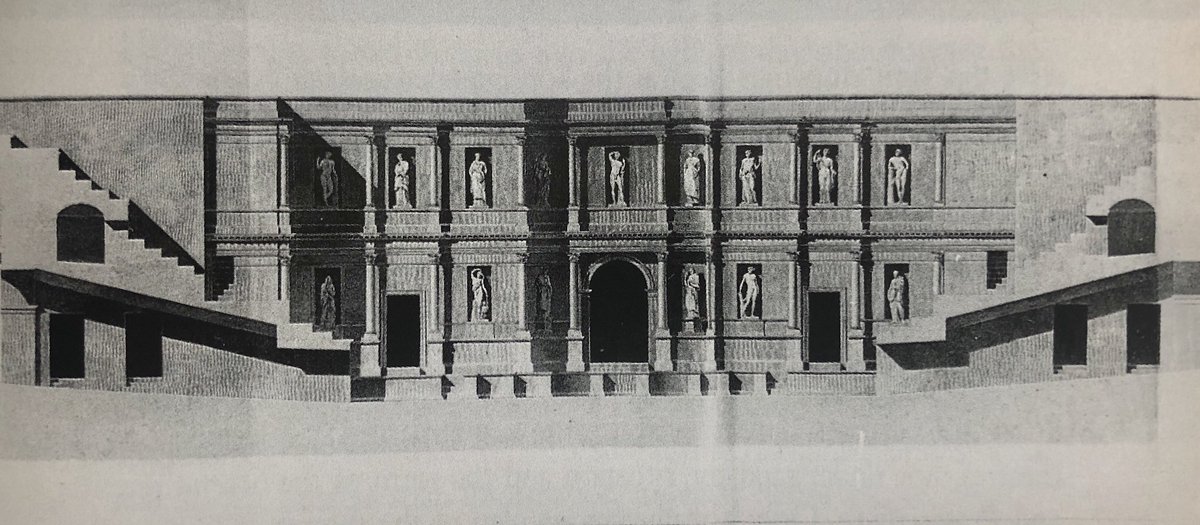
Little is left of the wonderful wall paintings and many of the Grand Tourists (and more recent visitors) have left their mark by way of graffiti and scribblings on the surface of the plaster. However, those daubed in red paint appear to be original Roman. 



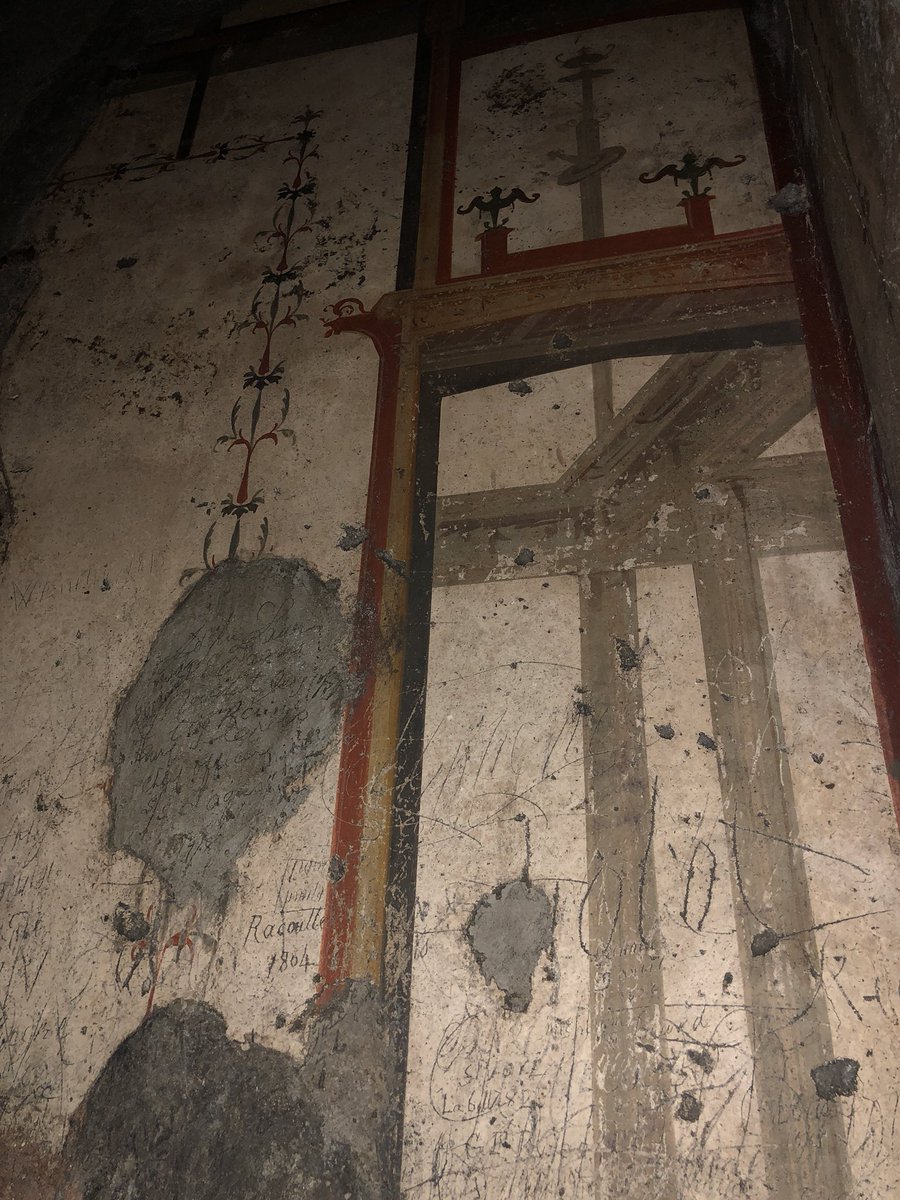
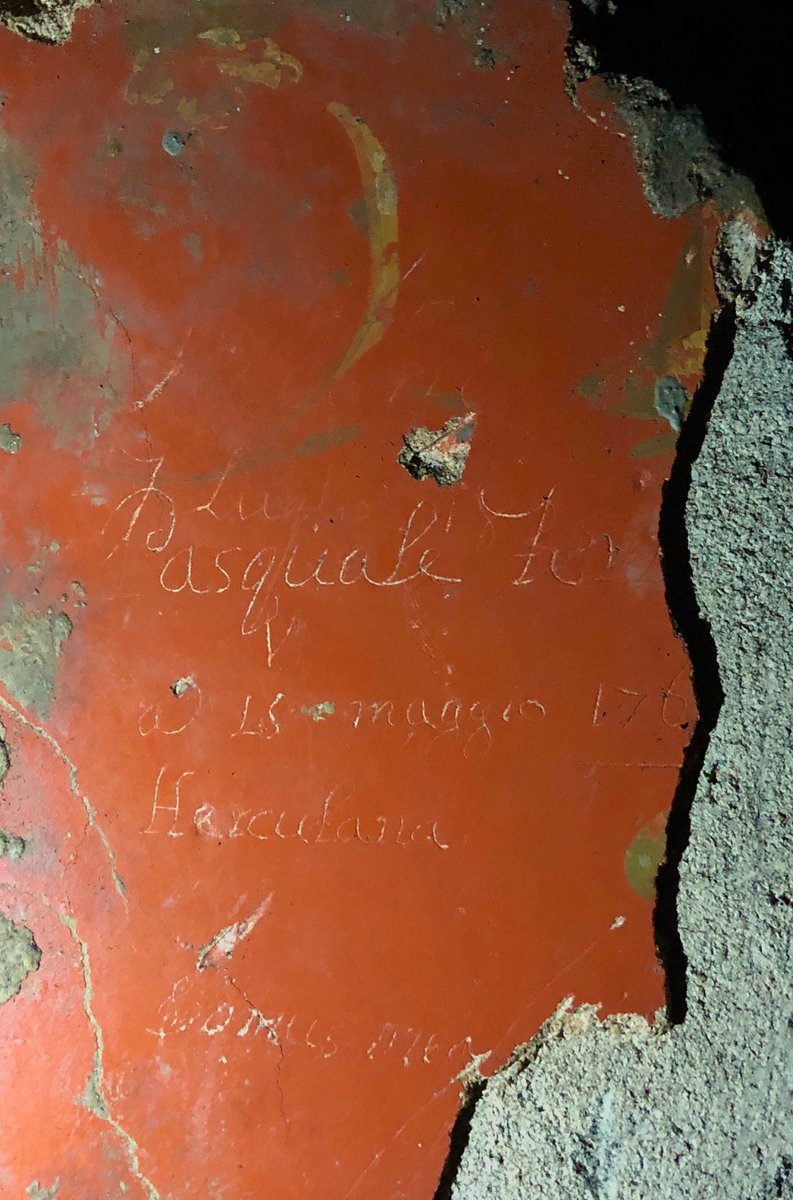
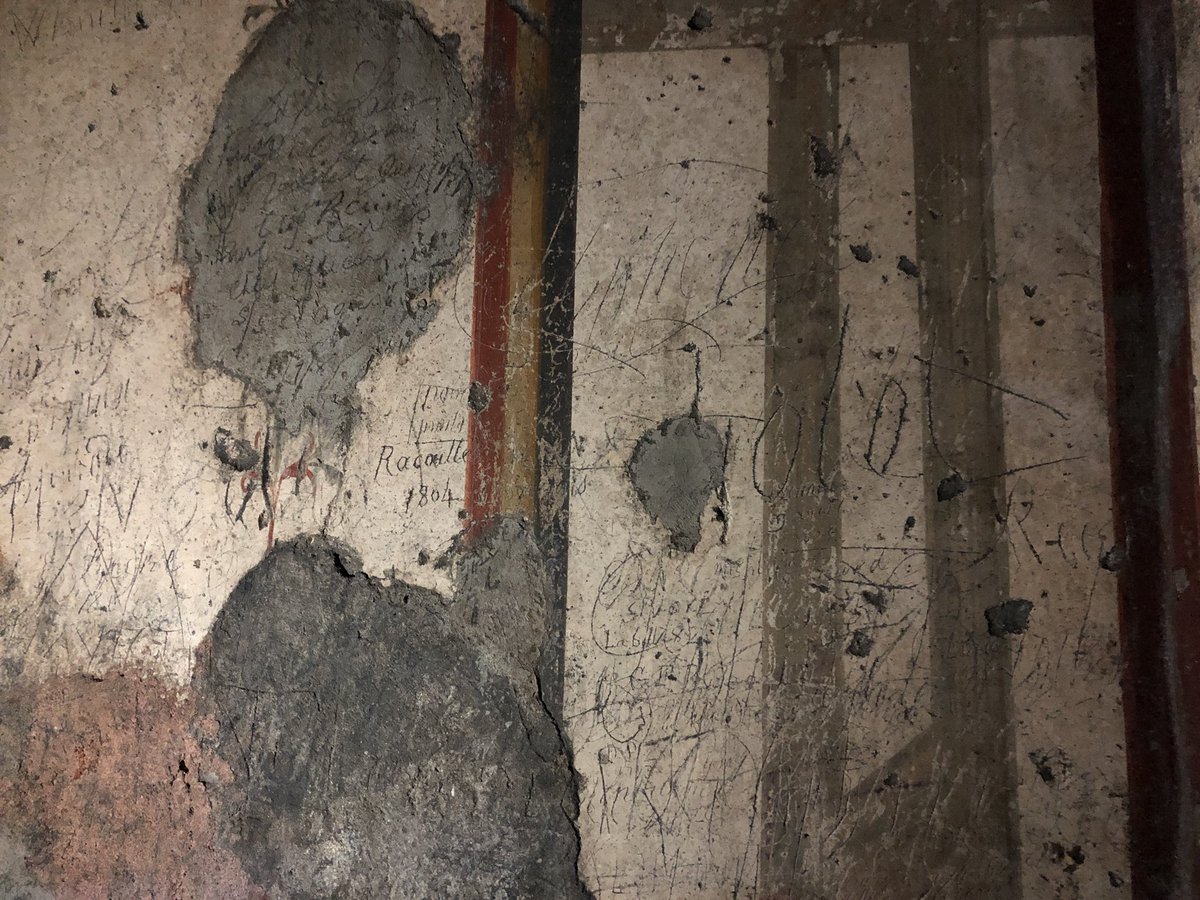
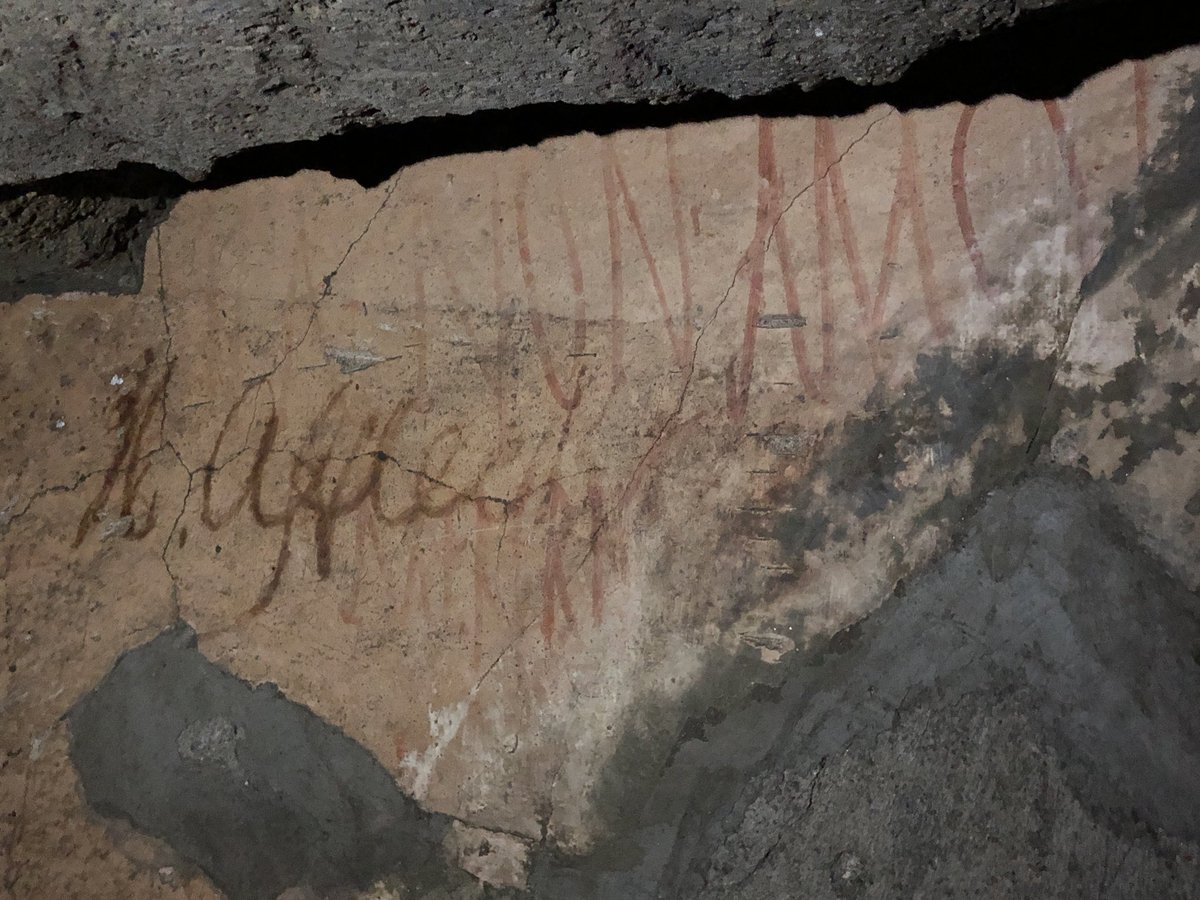
In the roof of a narrow tunnel near the back of the theatre’s stage there’s an imprint of the face of a statue of M. Nonius Balbus left in the volcanic material.
I find it utterly haunting & exhilarating to see a trace of that statue & where it was prised from the volcanic debris

I find it utterly haunting & exhilarating to see a trace of that statue & where it was prised from the volcanic debris
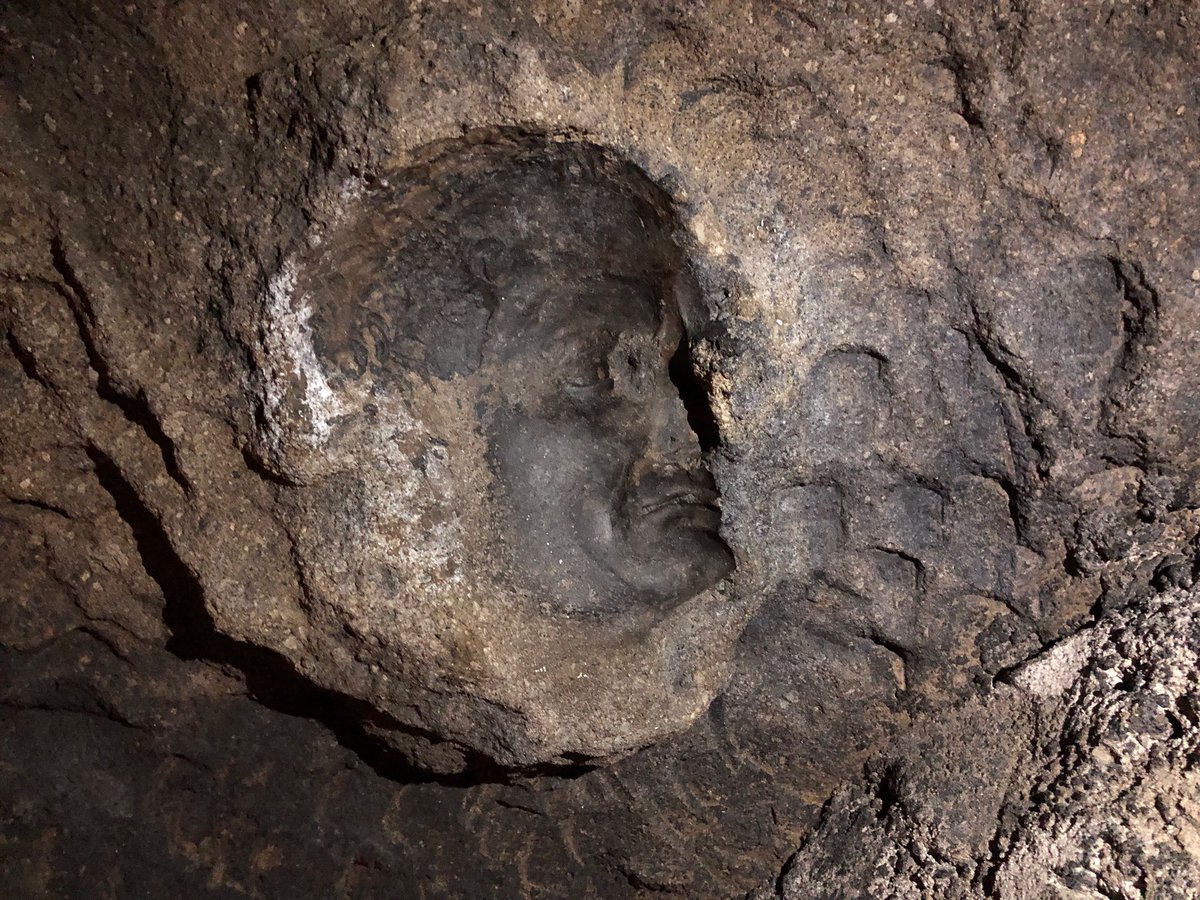
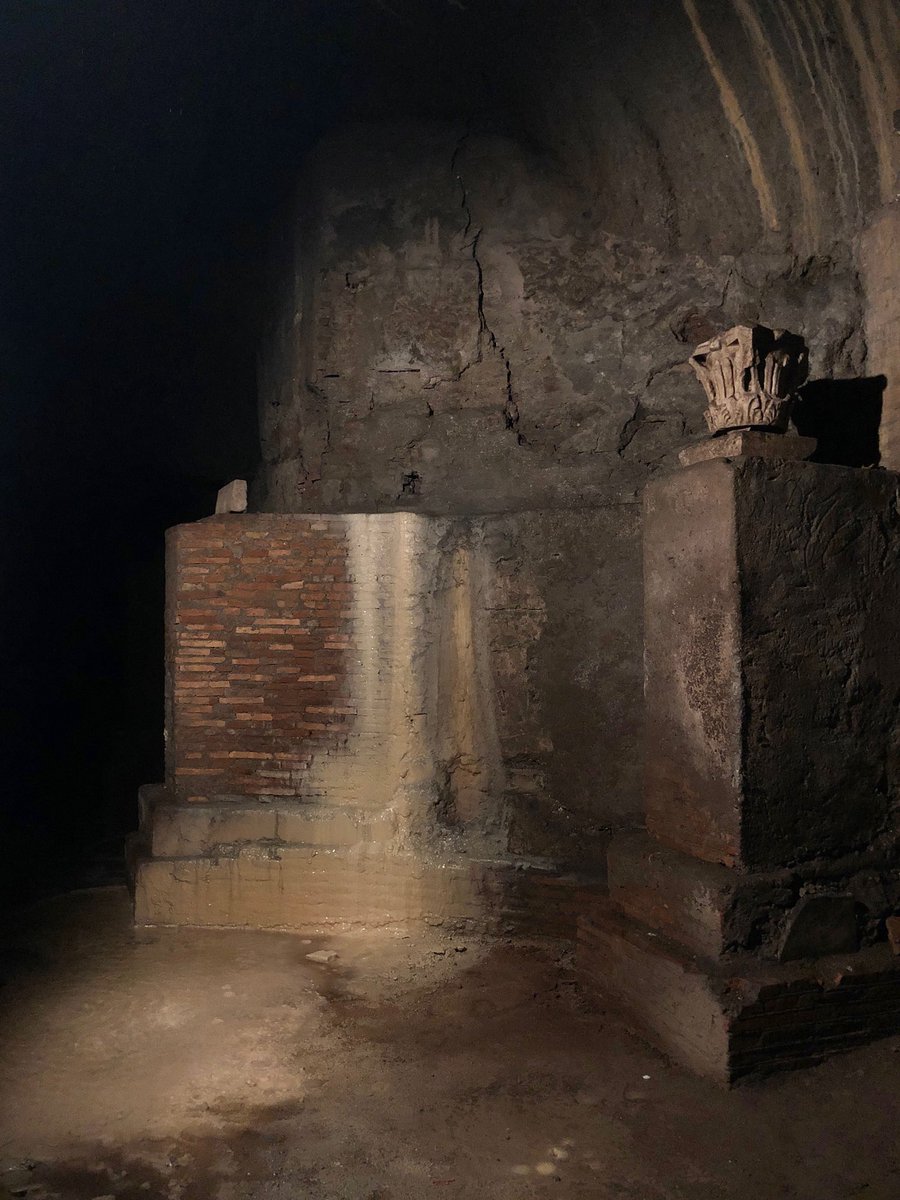
It was such a privilege to have a private tour of the theatre but as the Director of Herculaneum wrote in response to my thanks:
“It will no longer be a privilege but a right to knowledge for all”.
The theatre will soon be open regularly to the public & I highly recommend a visit

“It will no longer be a privilege but a right to knowledge for all”.
The theatre will soon be open regularly to the public & I highly recommend a visit
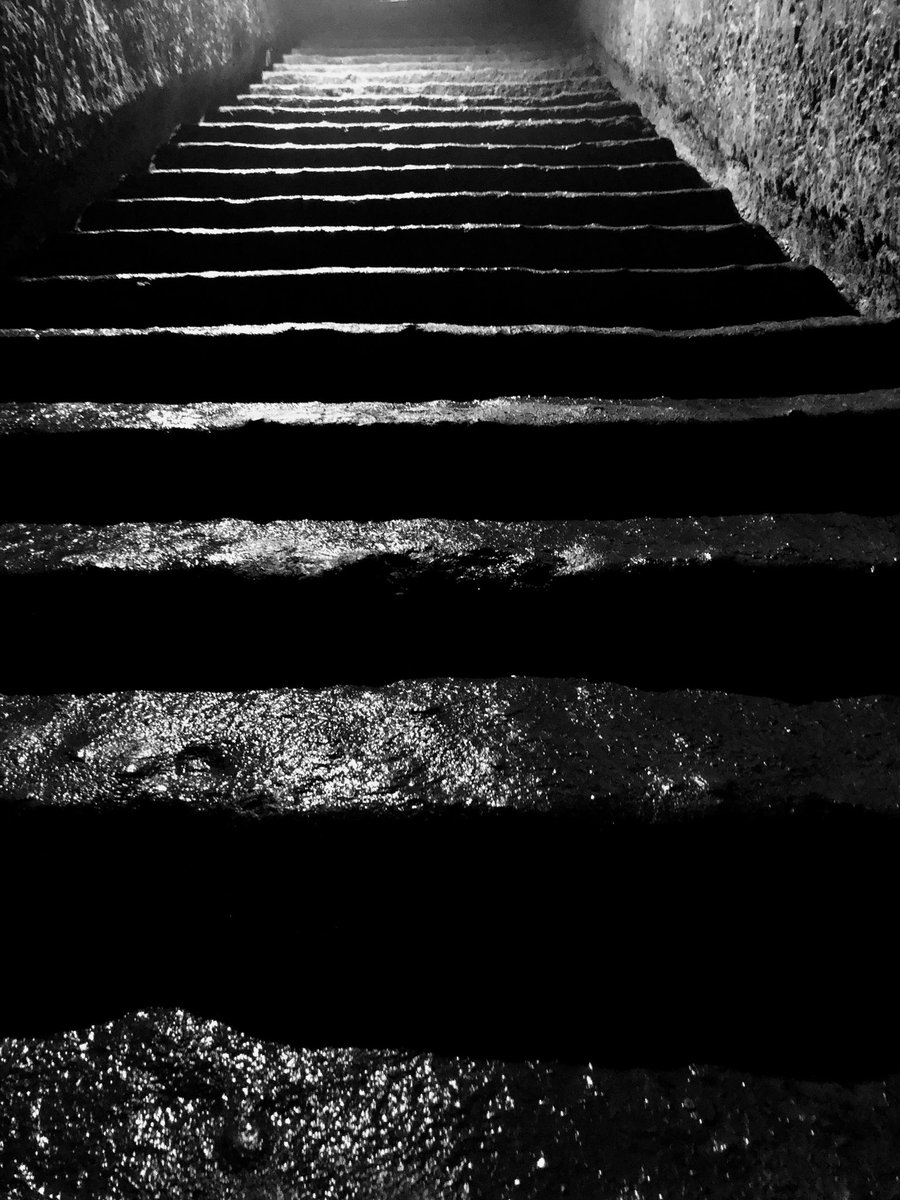

Keep your eyes on the Herculaneum website for news of opening times: ercolano.beniculturali.it
Next (limited) open season is in October & you can book tickets here:
ticketone.it/tickets.html?a…
Next (limited) open season is in October & you can book tickets here:
ticketone.it/tickets.html?a…
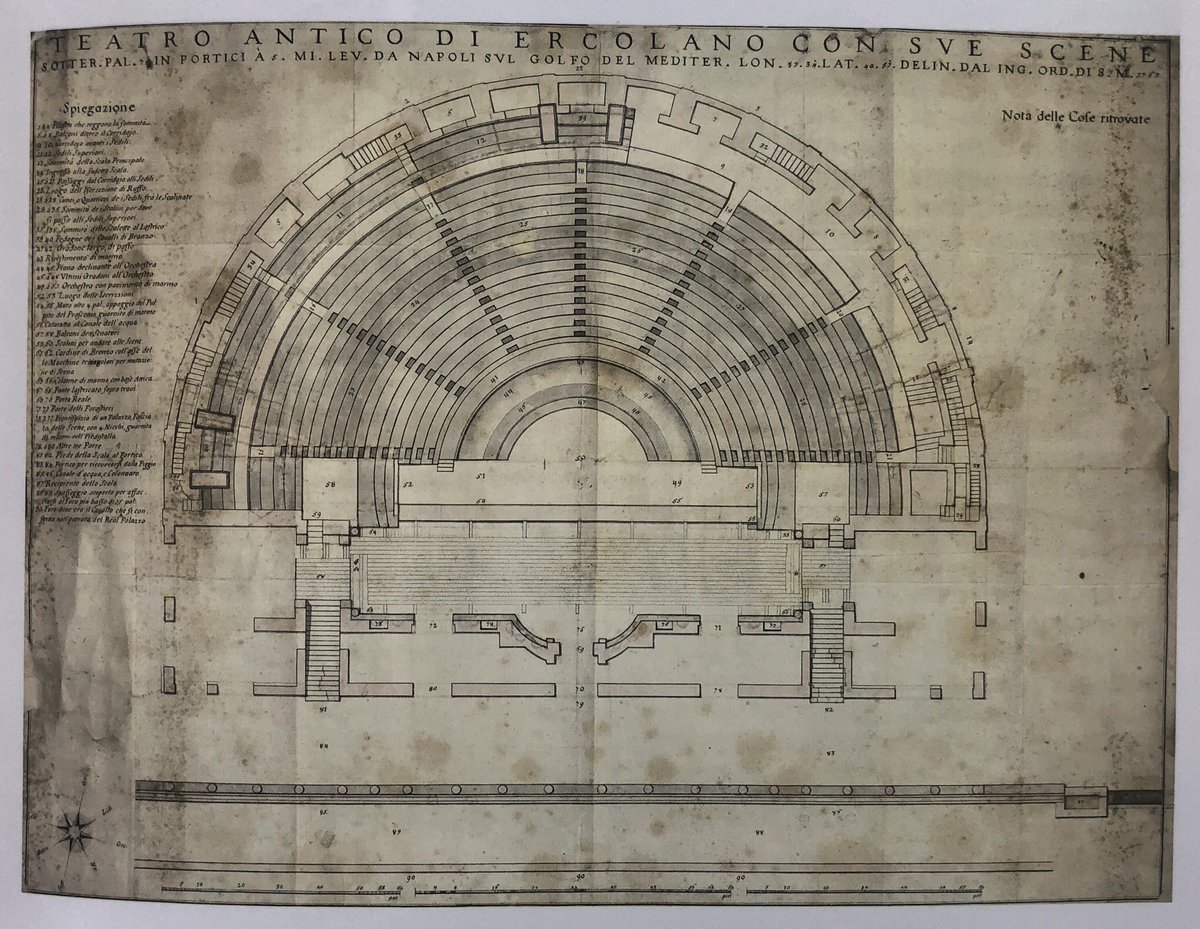
And if there is no chance you can visit the theatre at Herculaneum in person, next best thing is to navigate through the building virtually using the the wonderful panoramic photograph tour compiled by my friend Brian Donovan. donovanimages.co.nz/proxima-verita… 
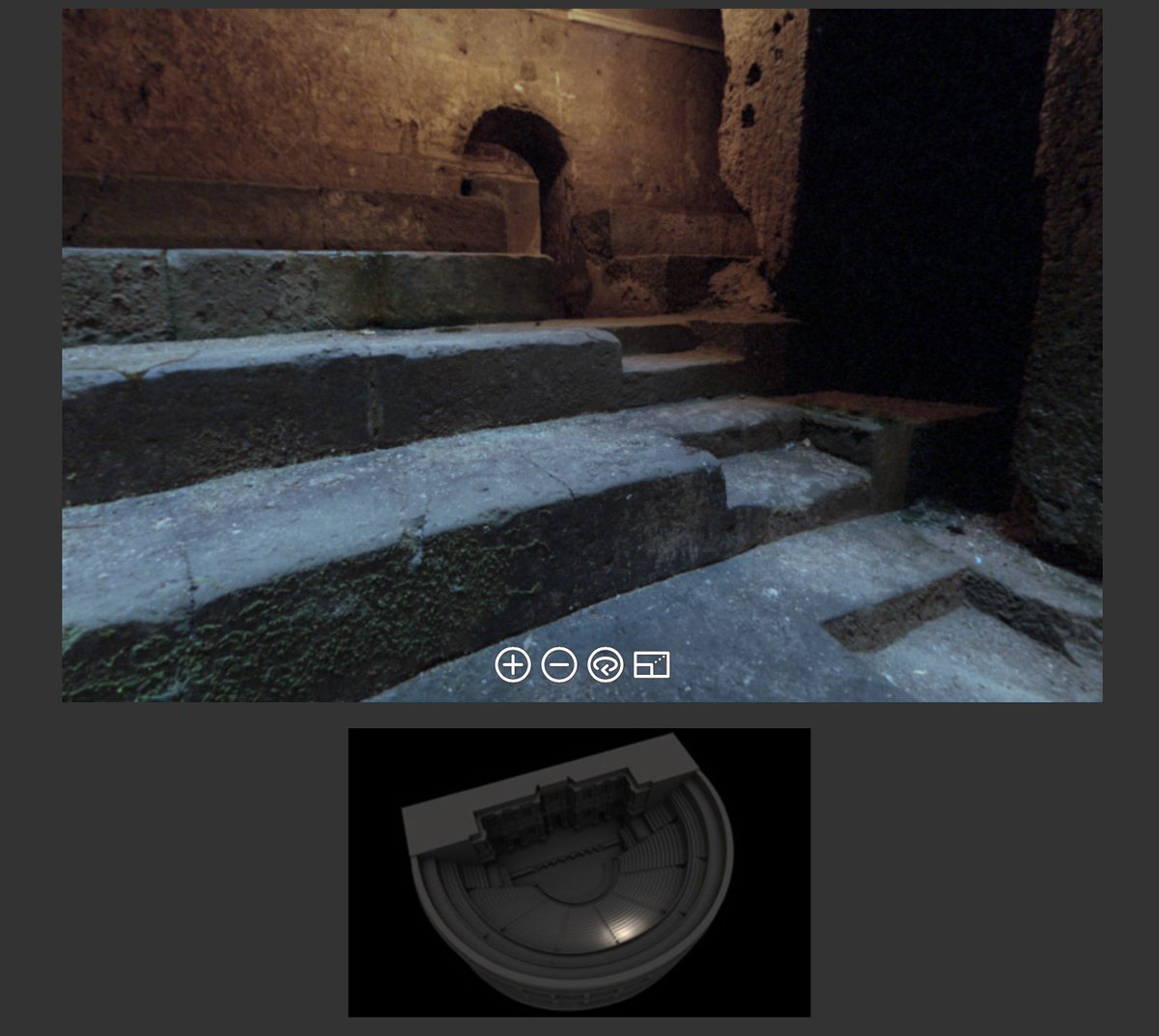
• • •
Missing some Tweet in this thread? You can try to
force a refresh


